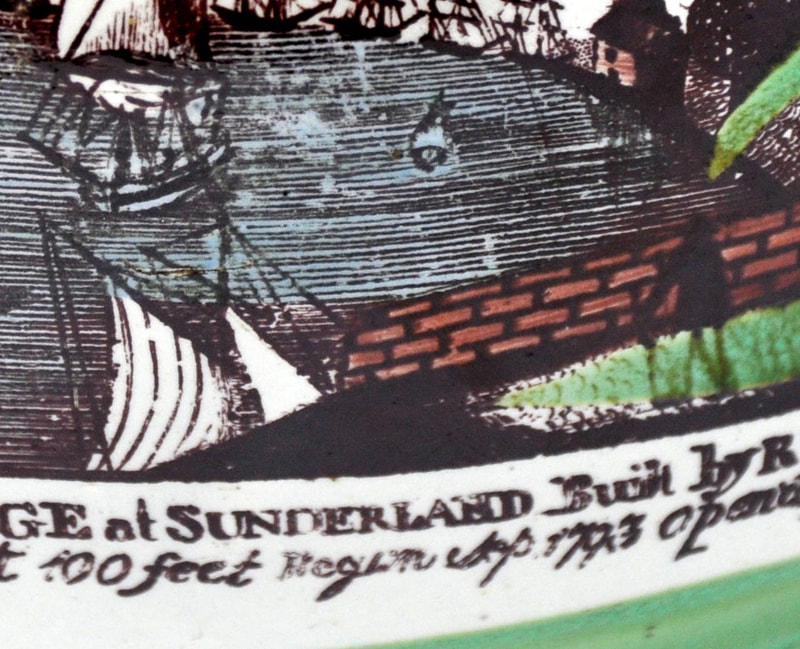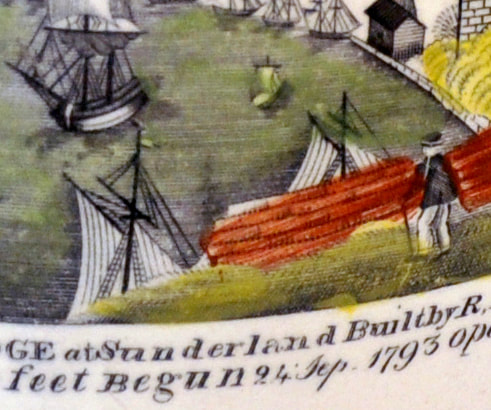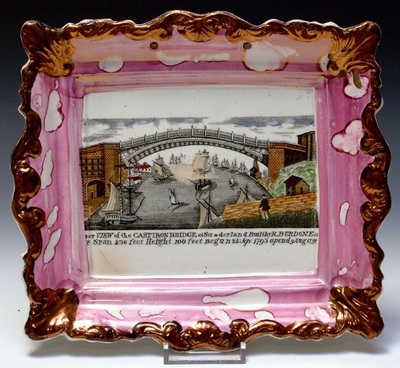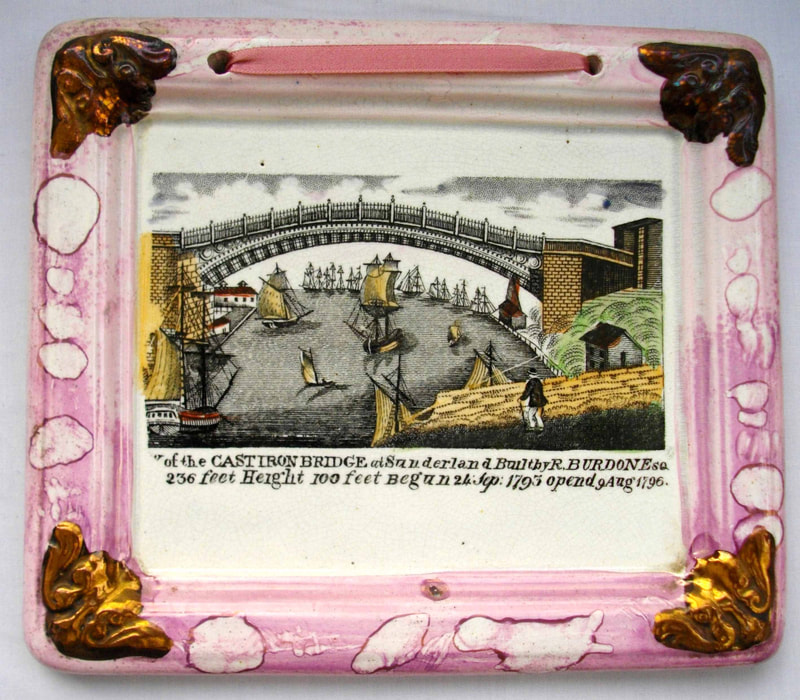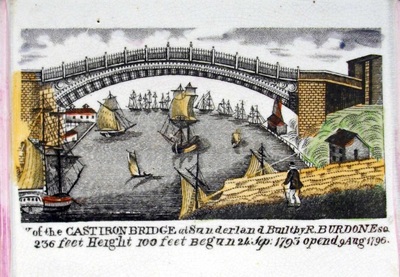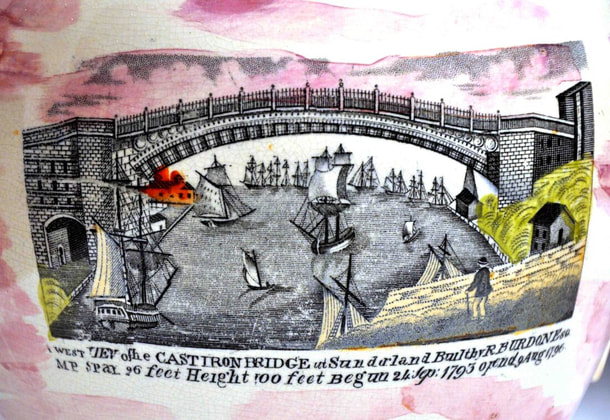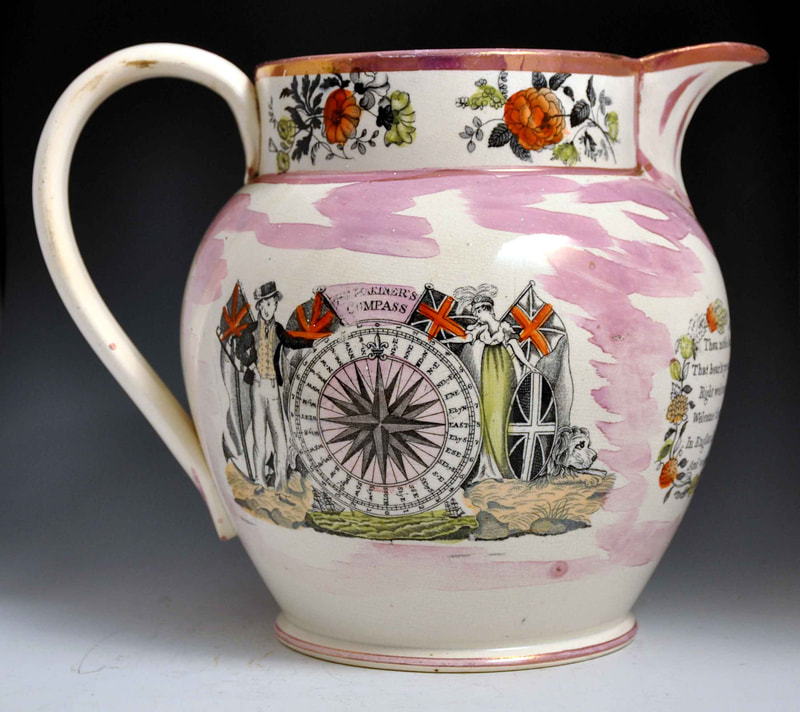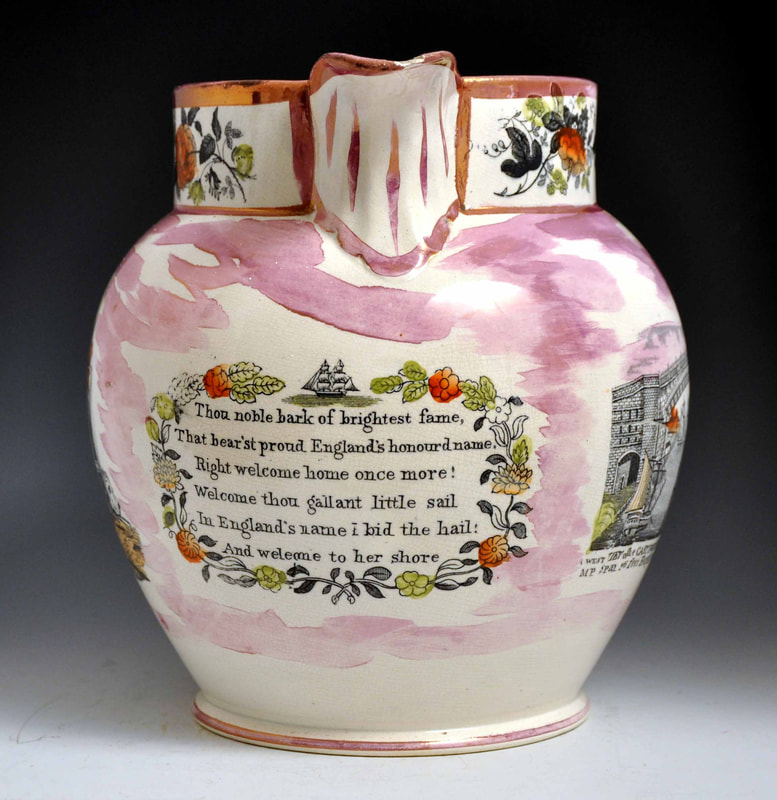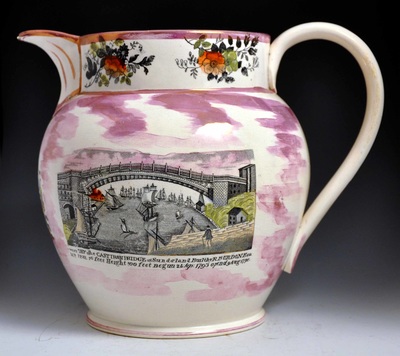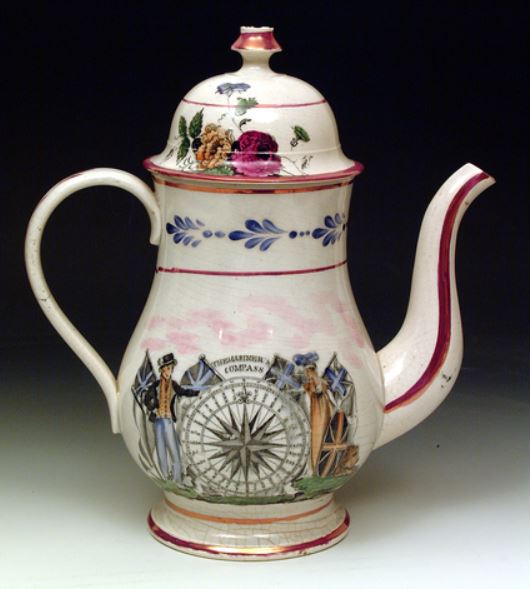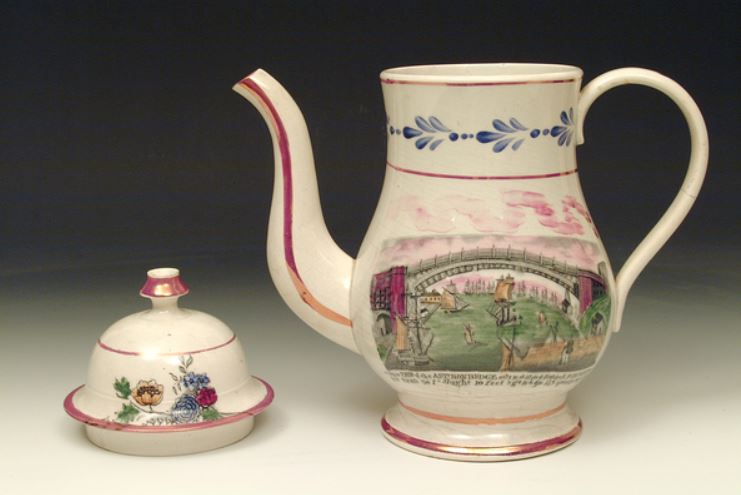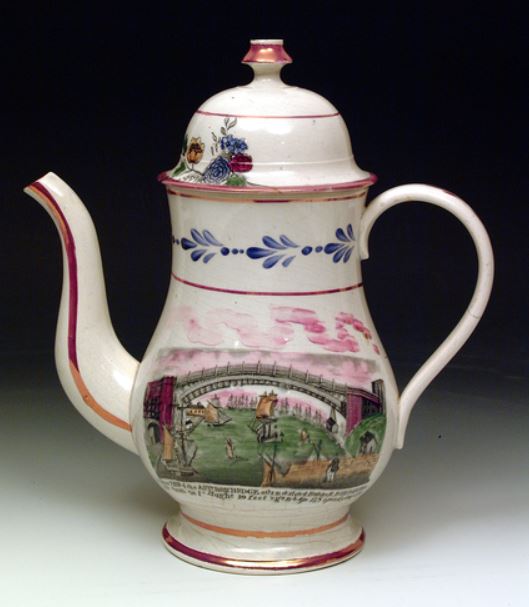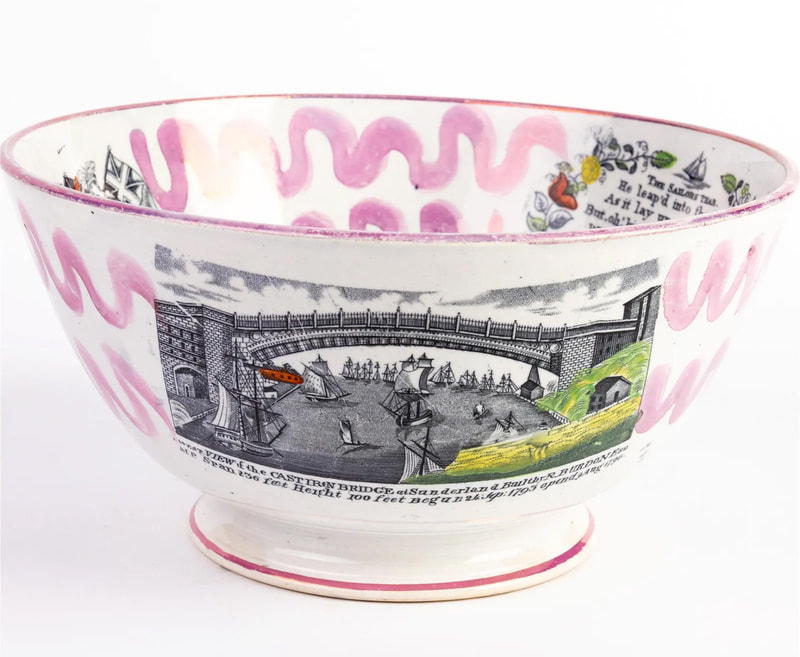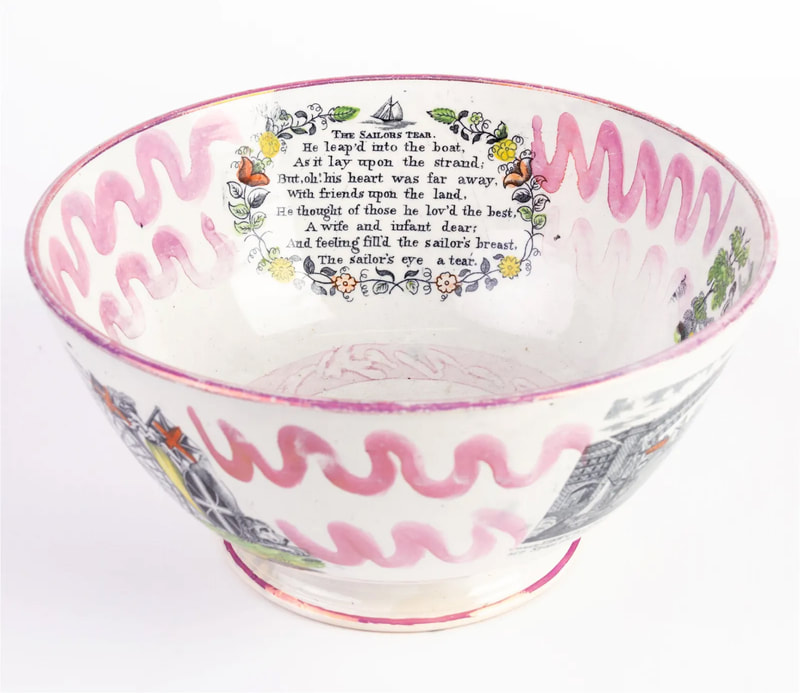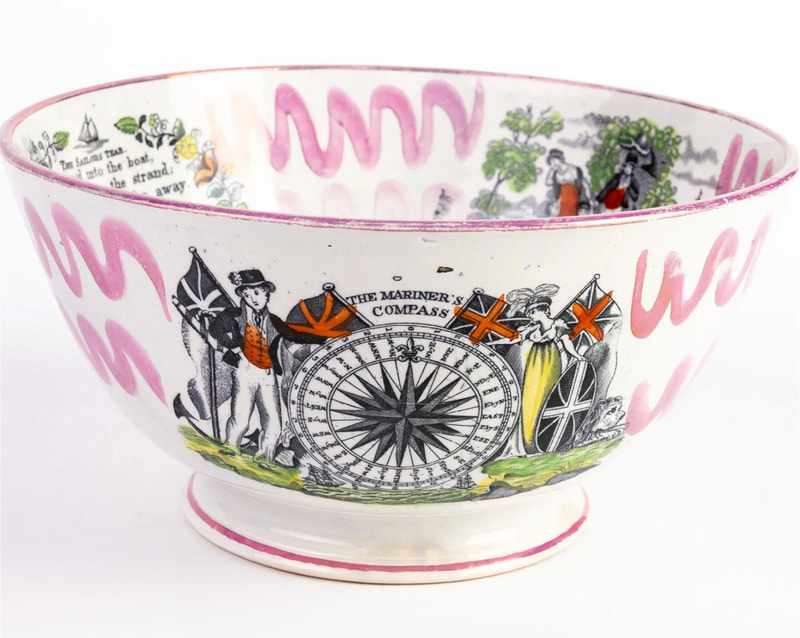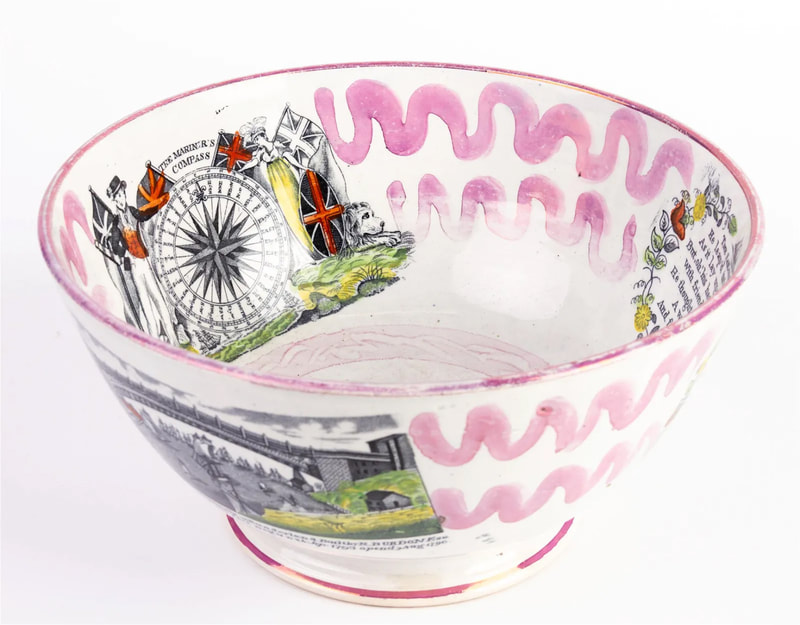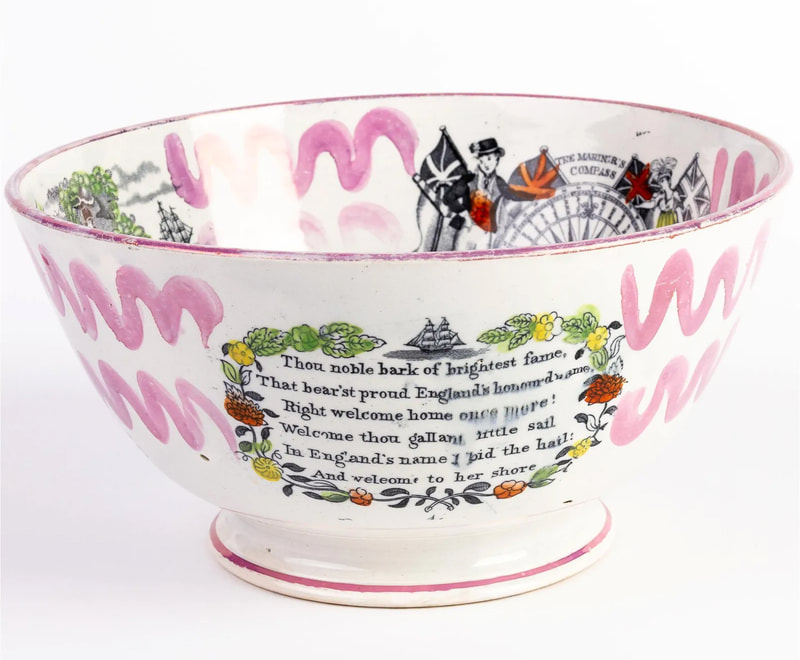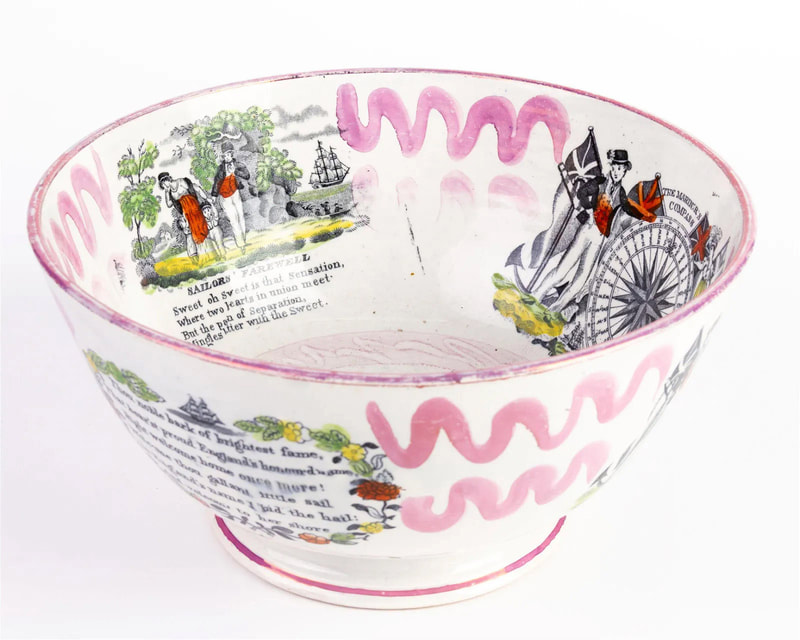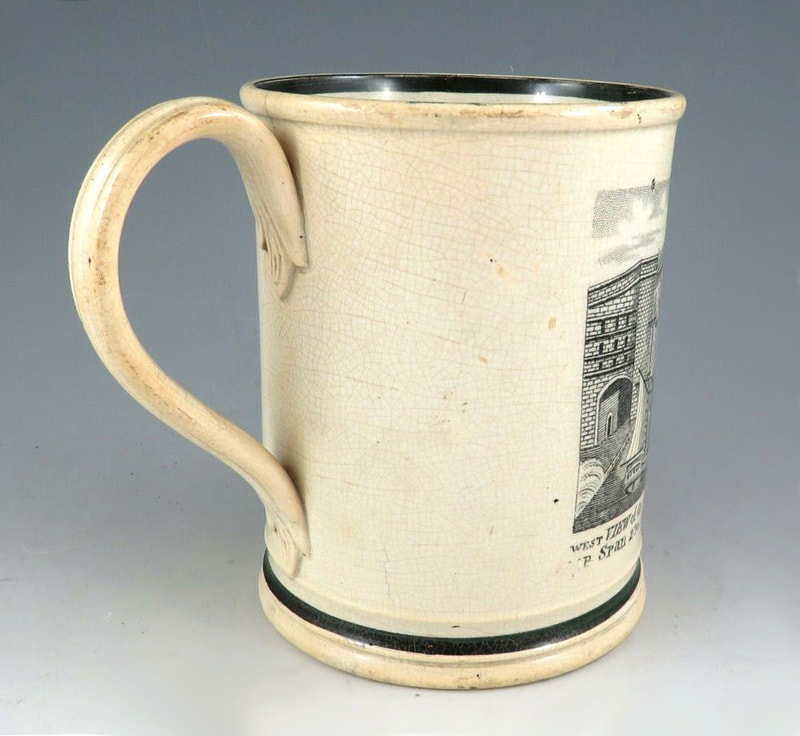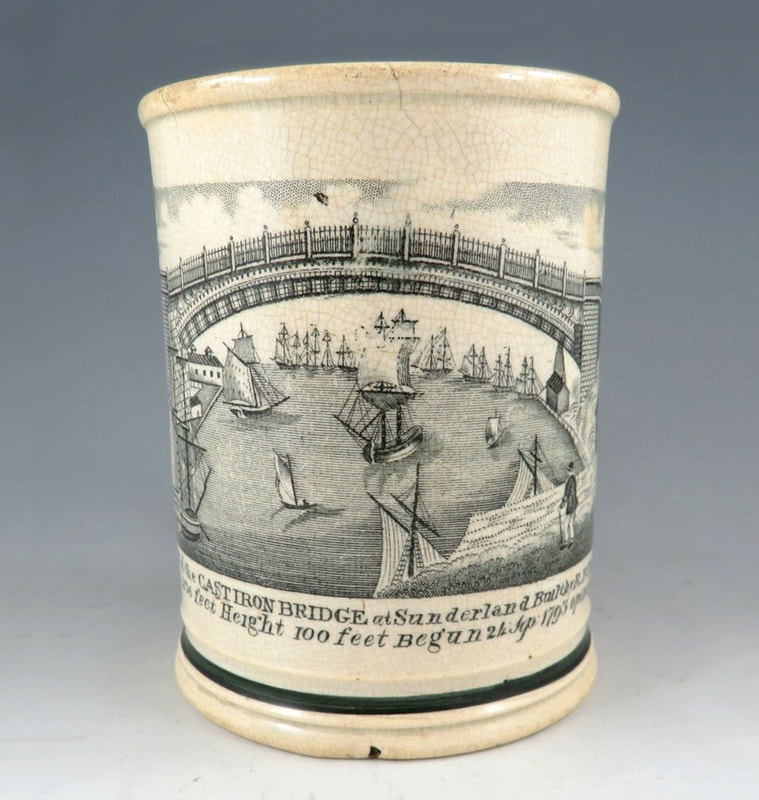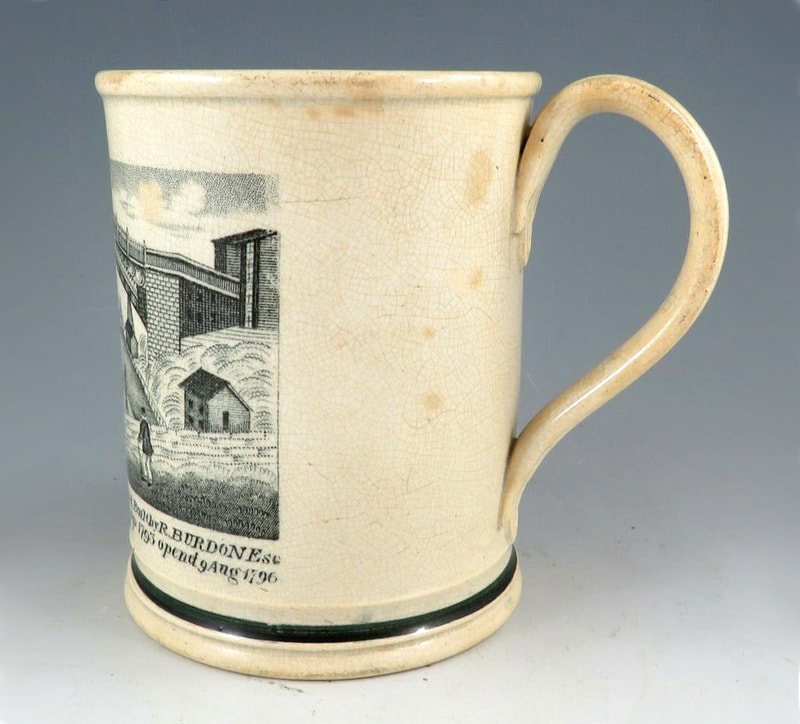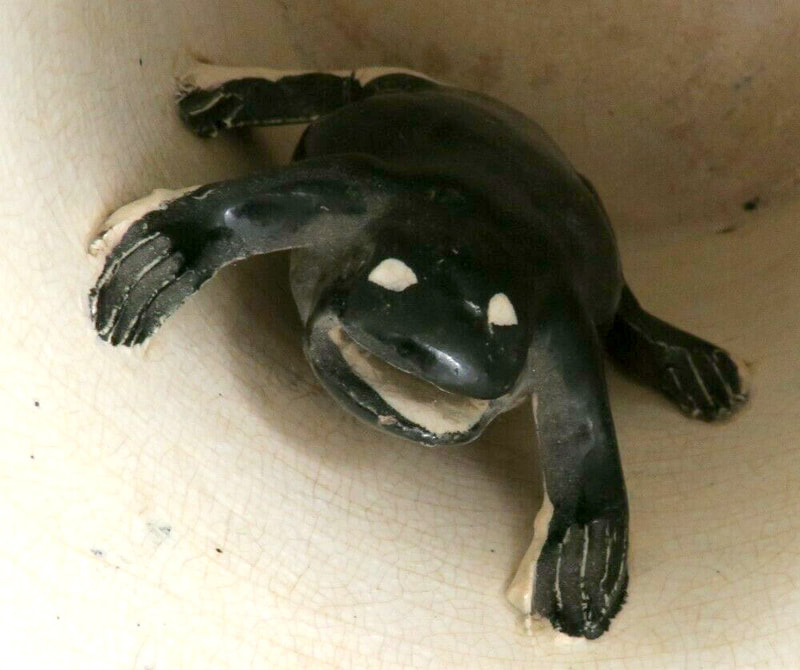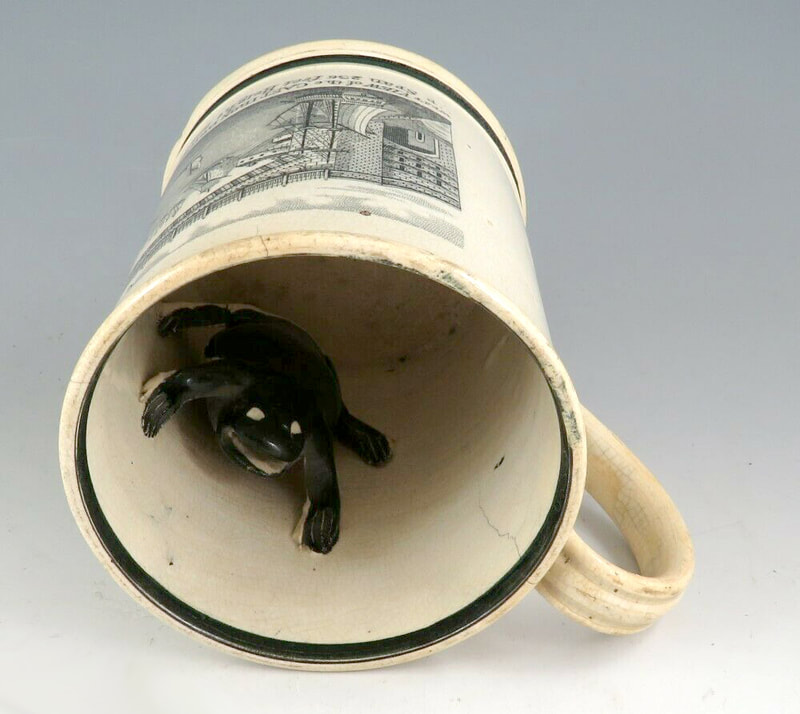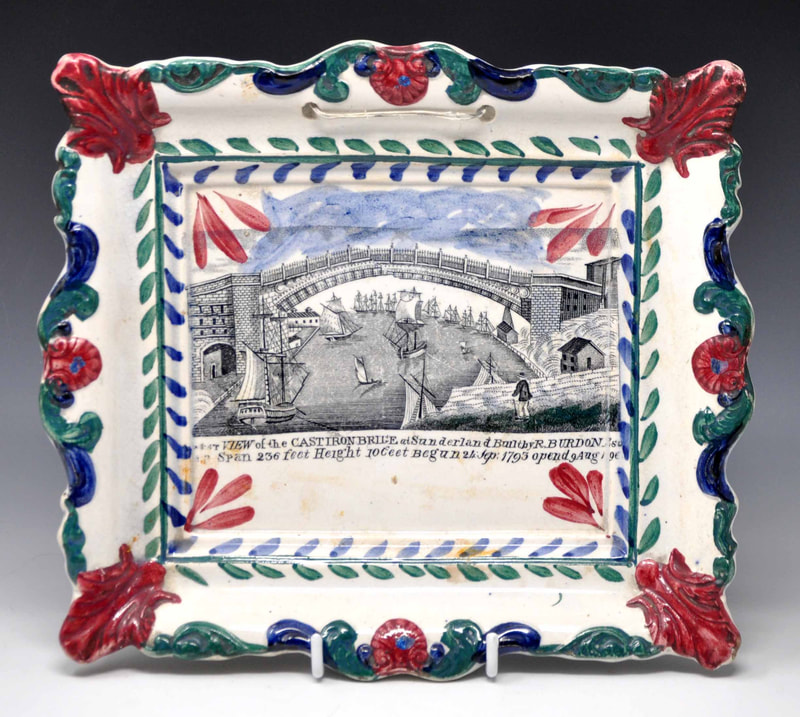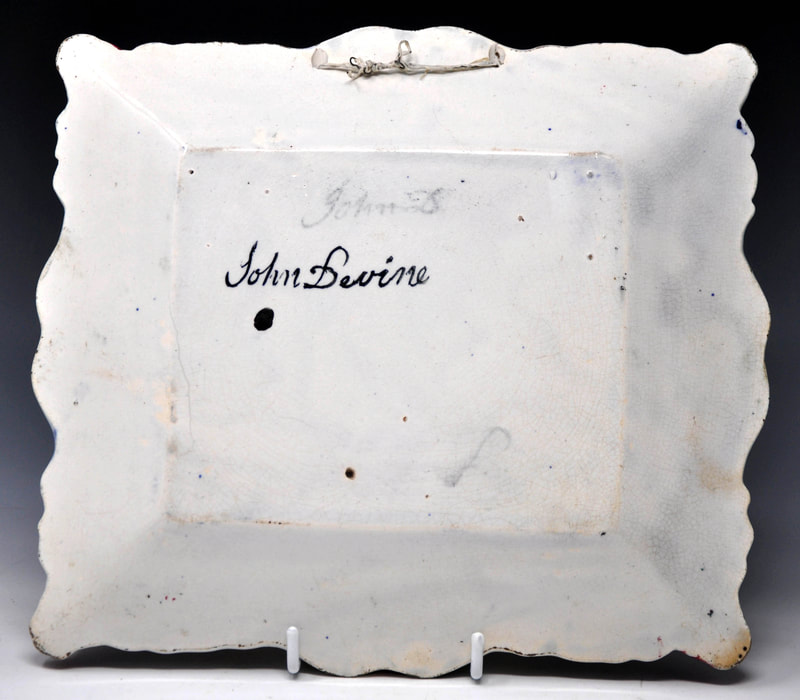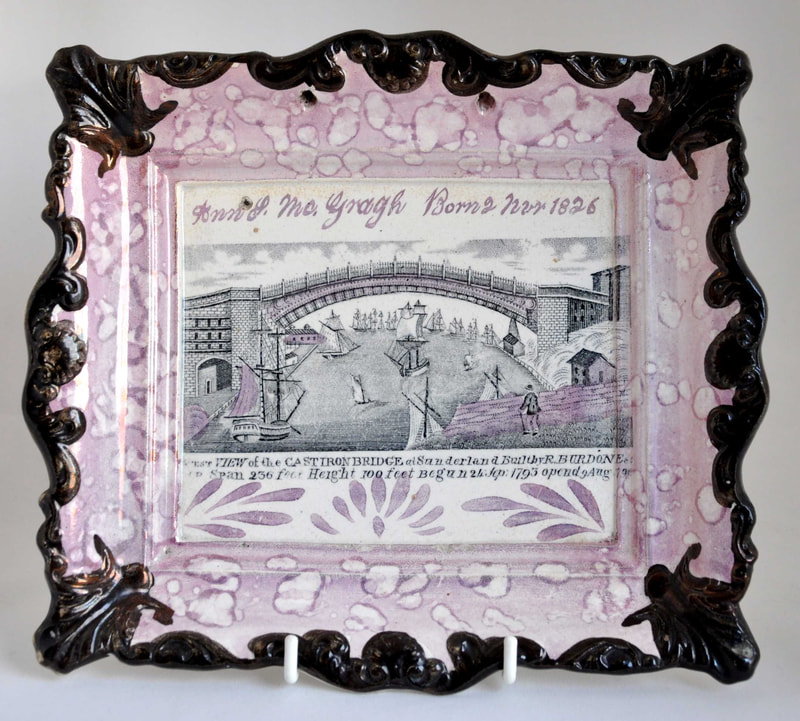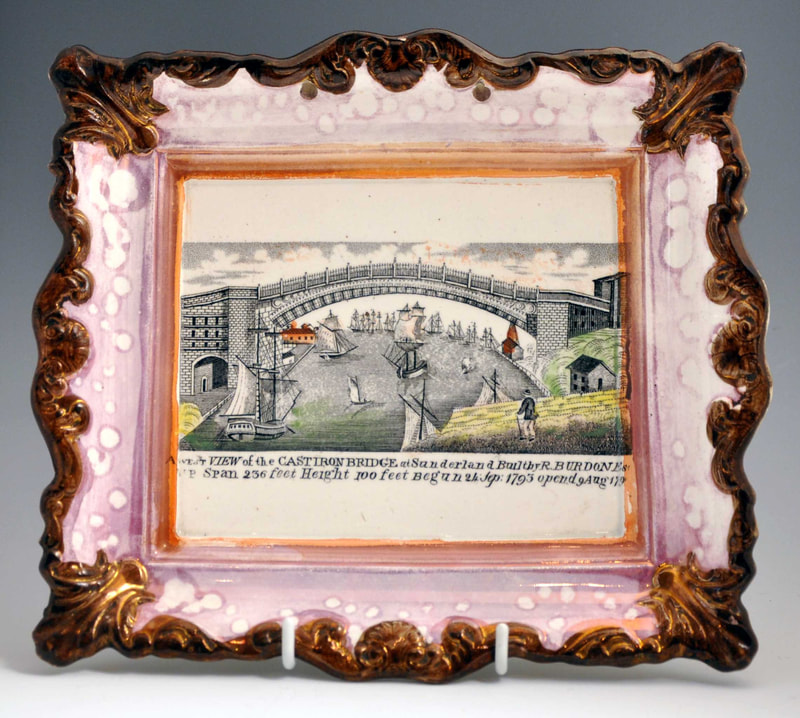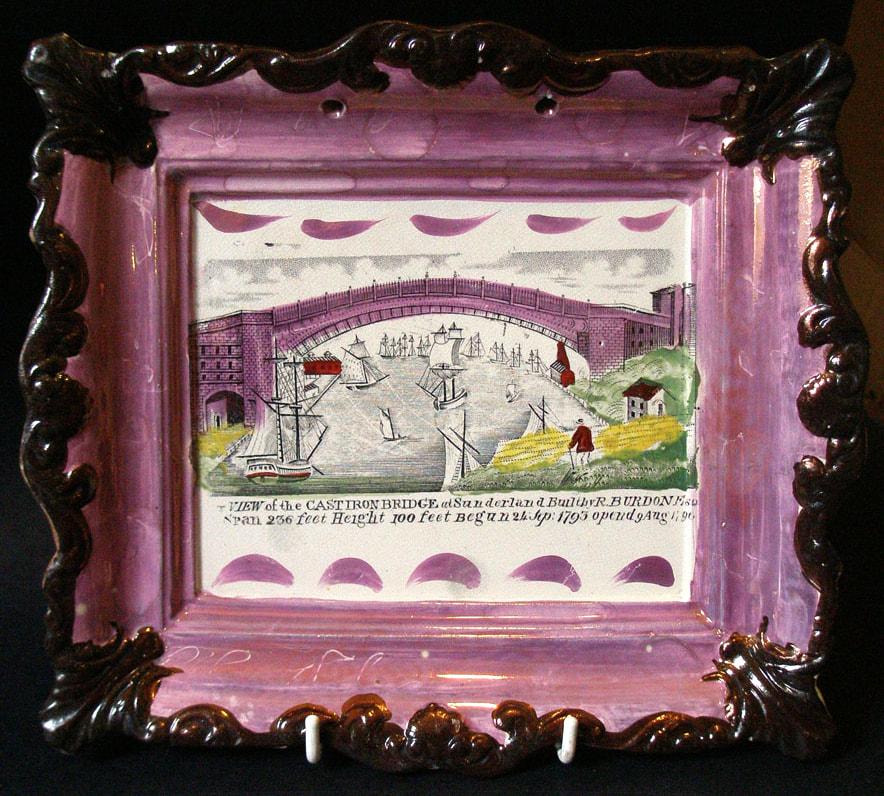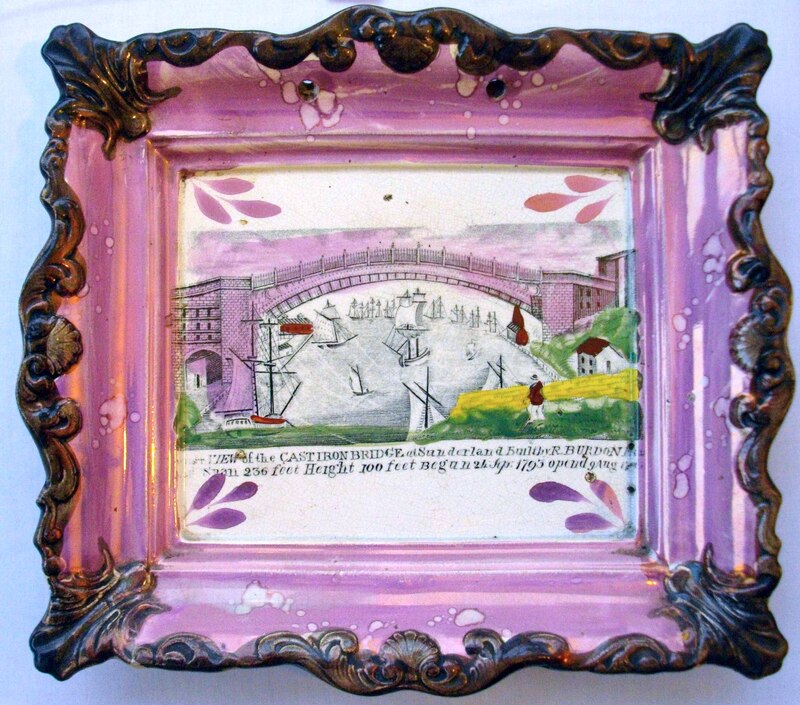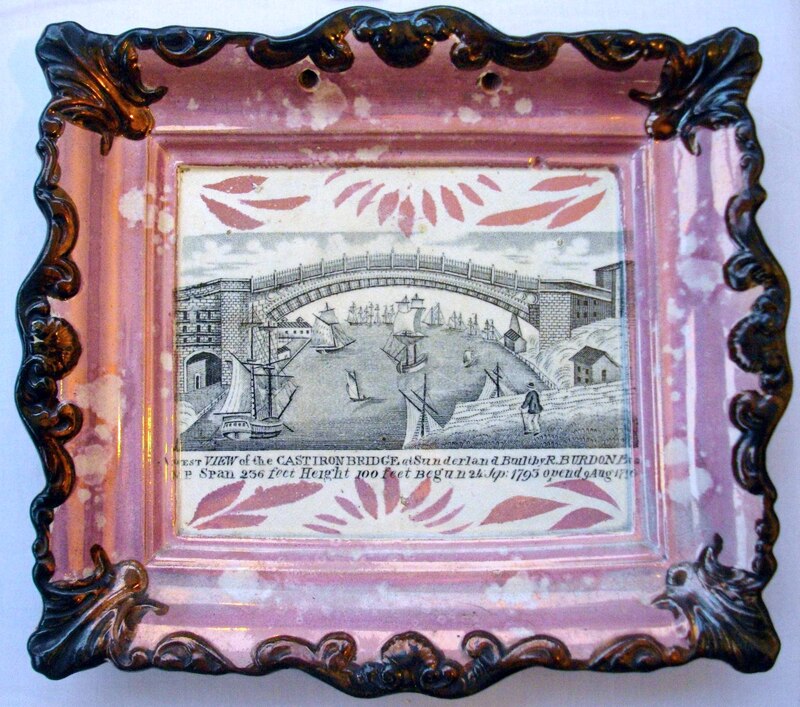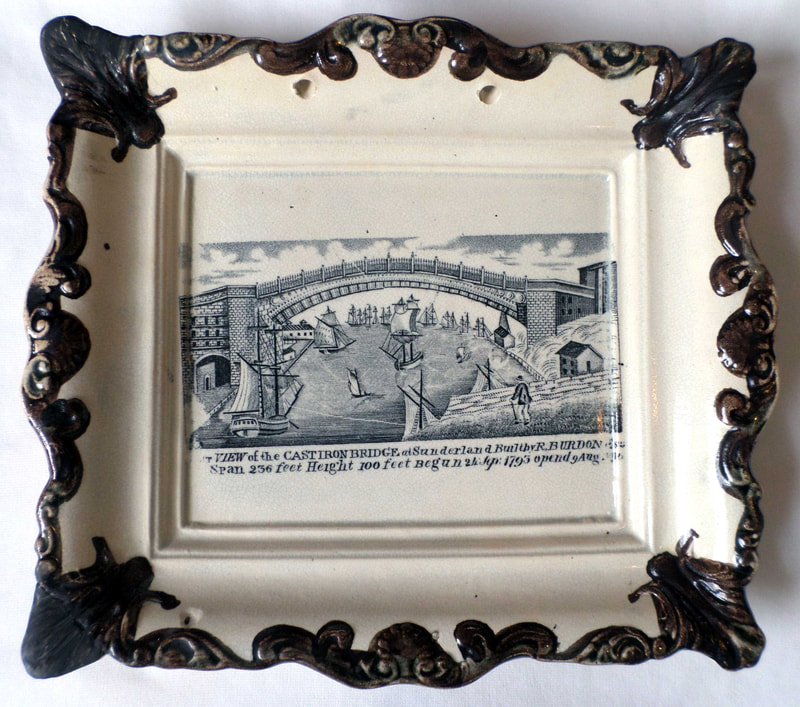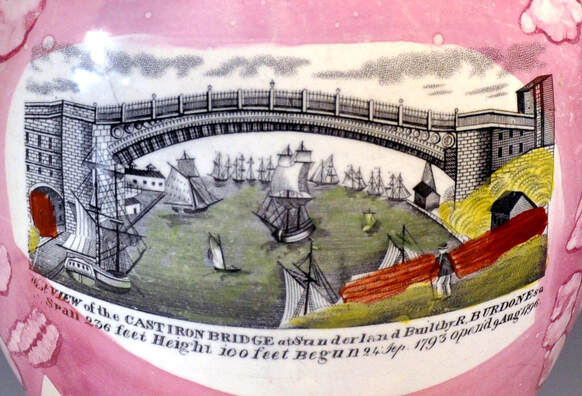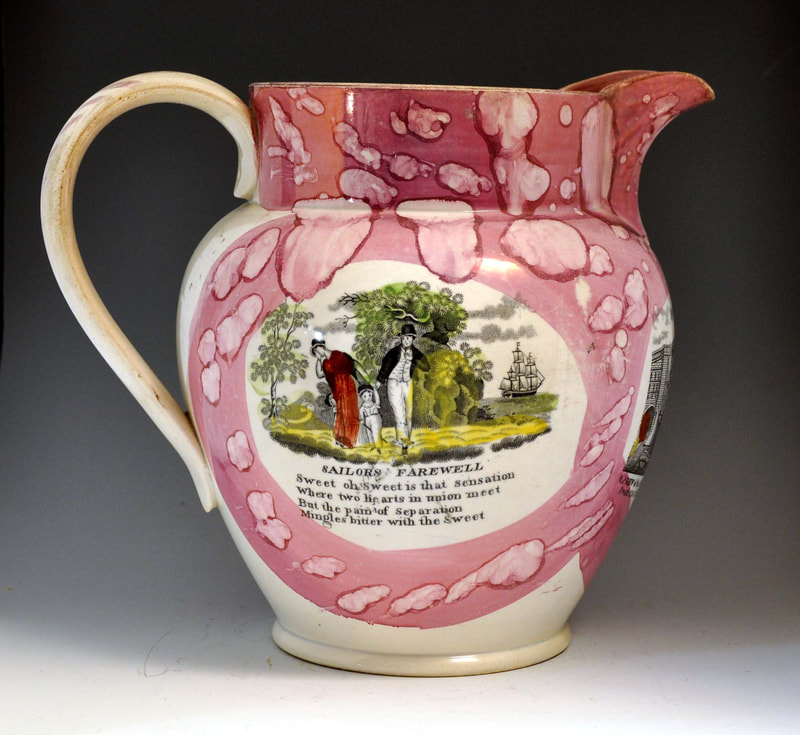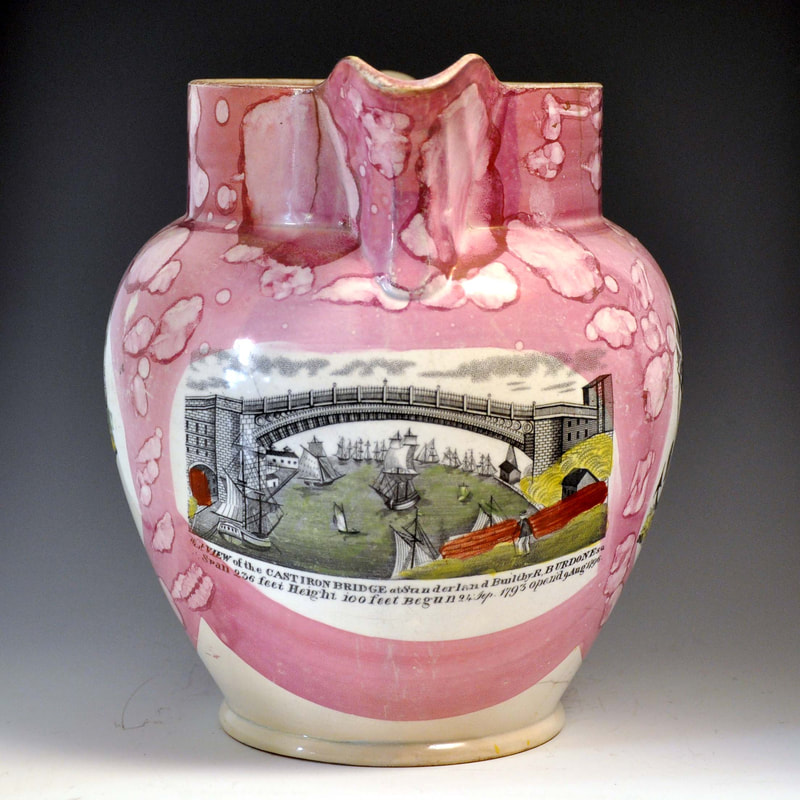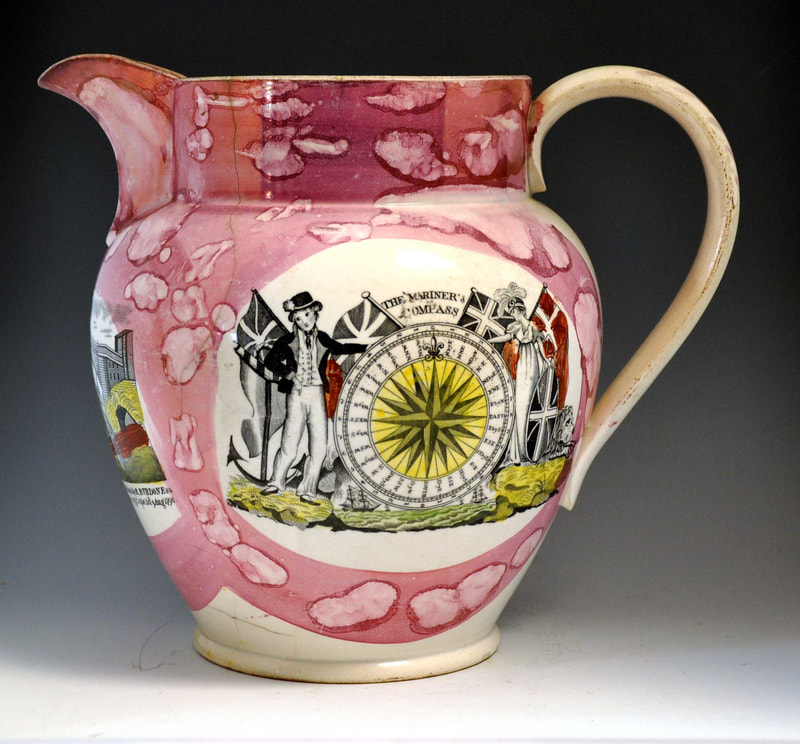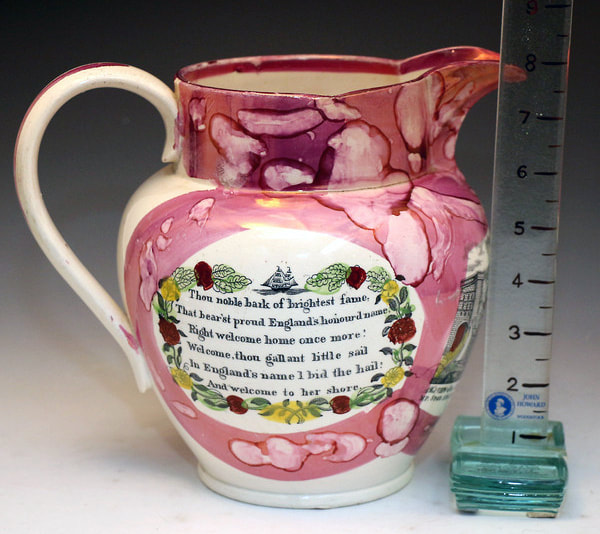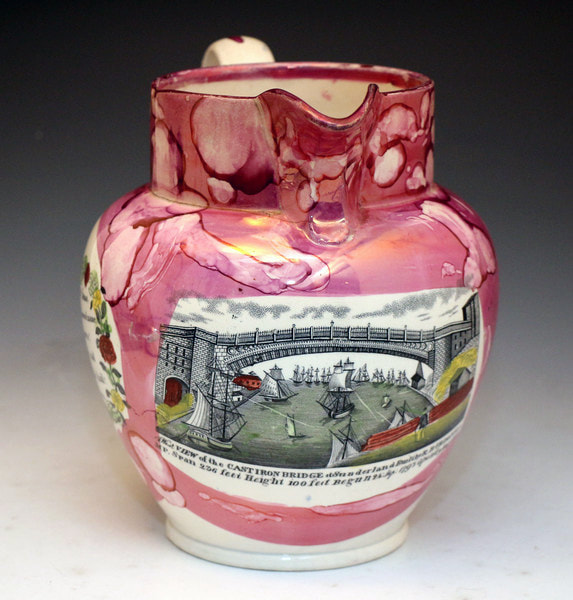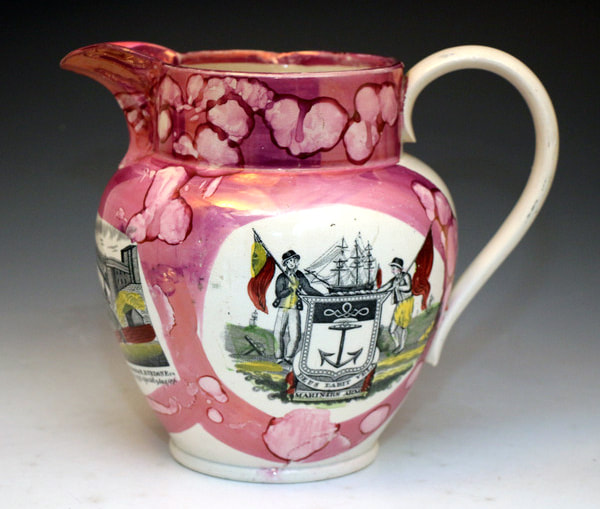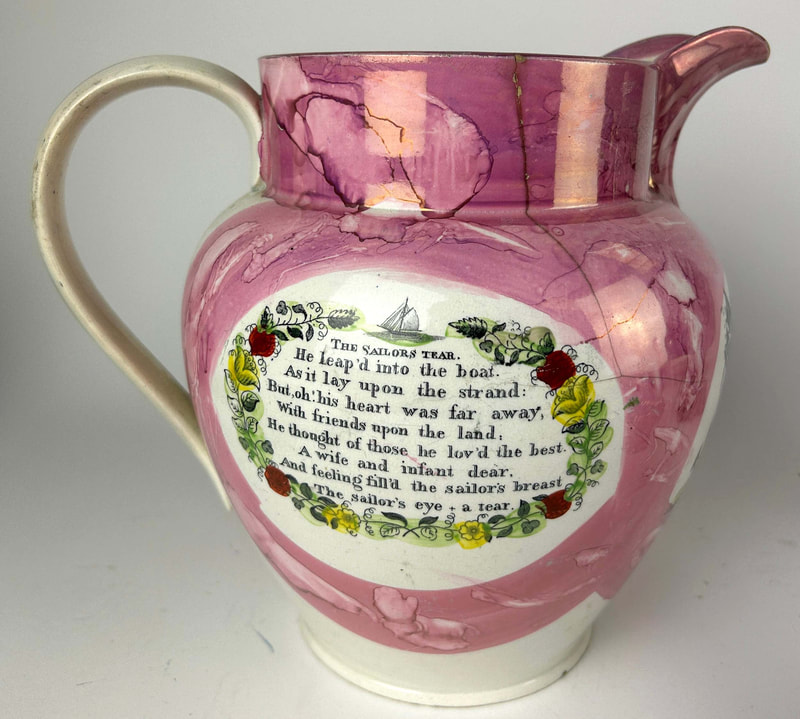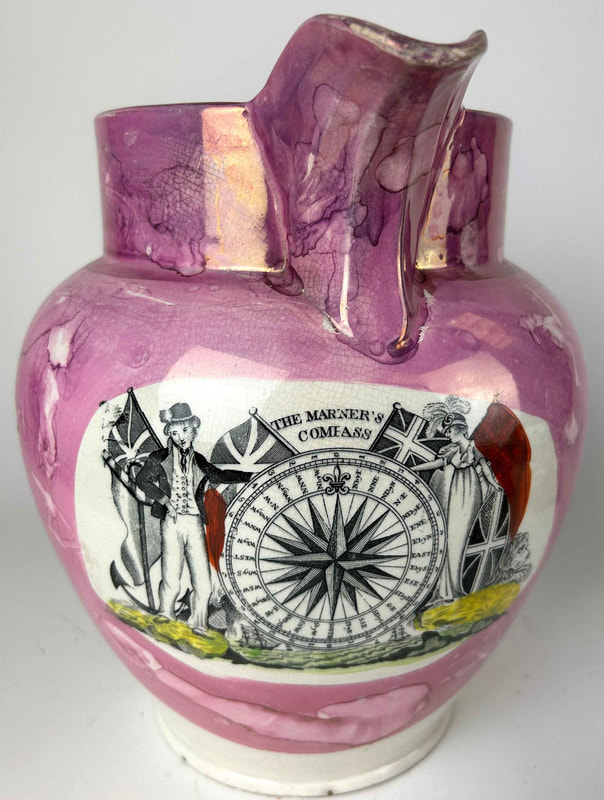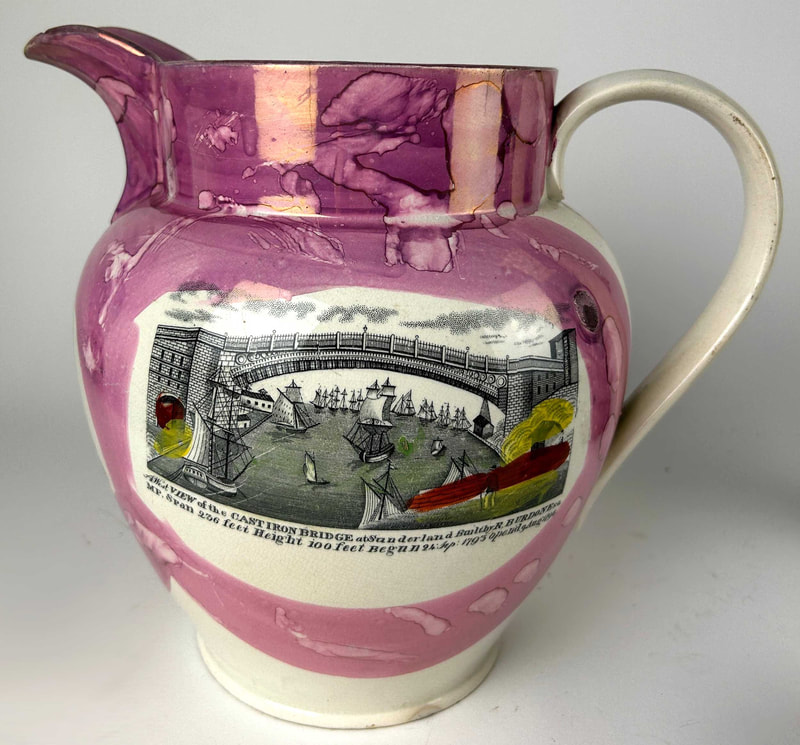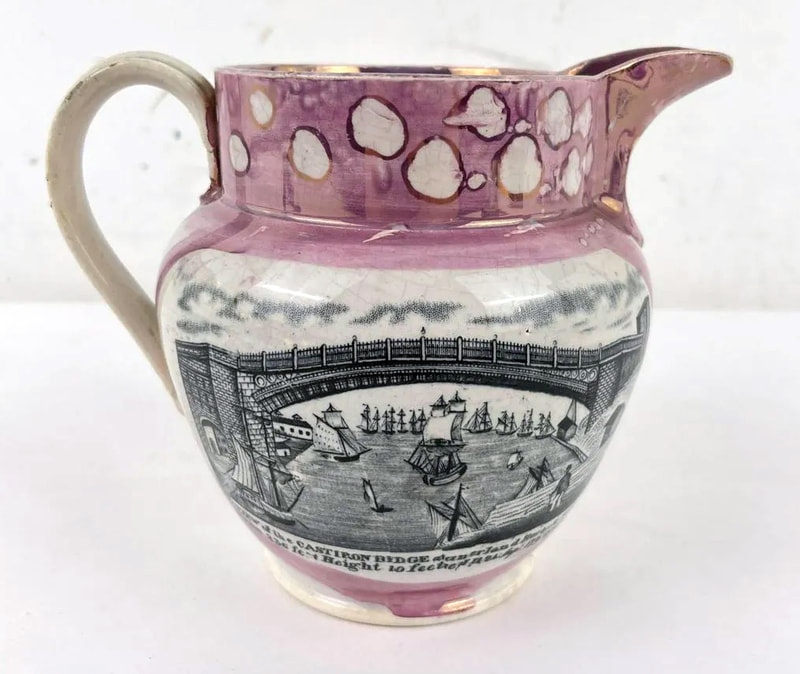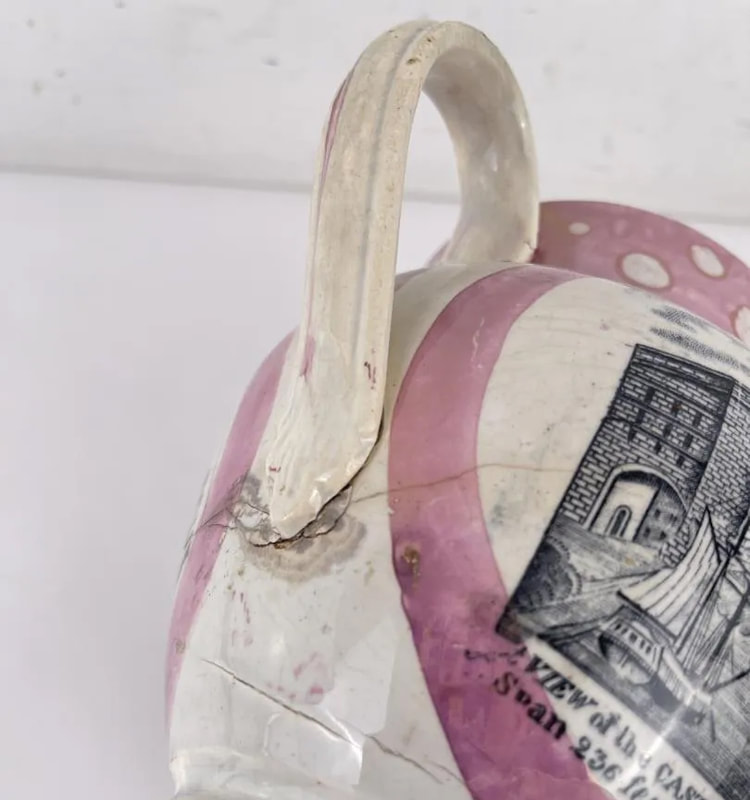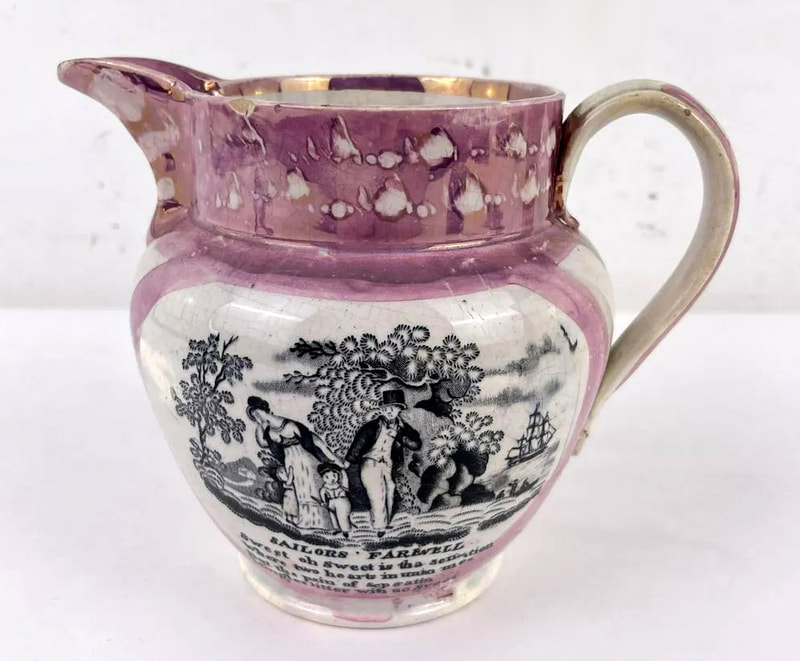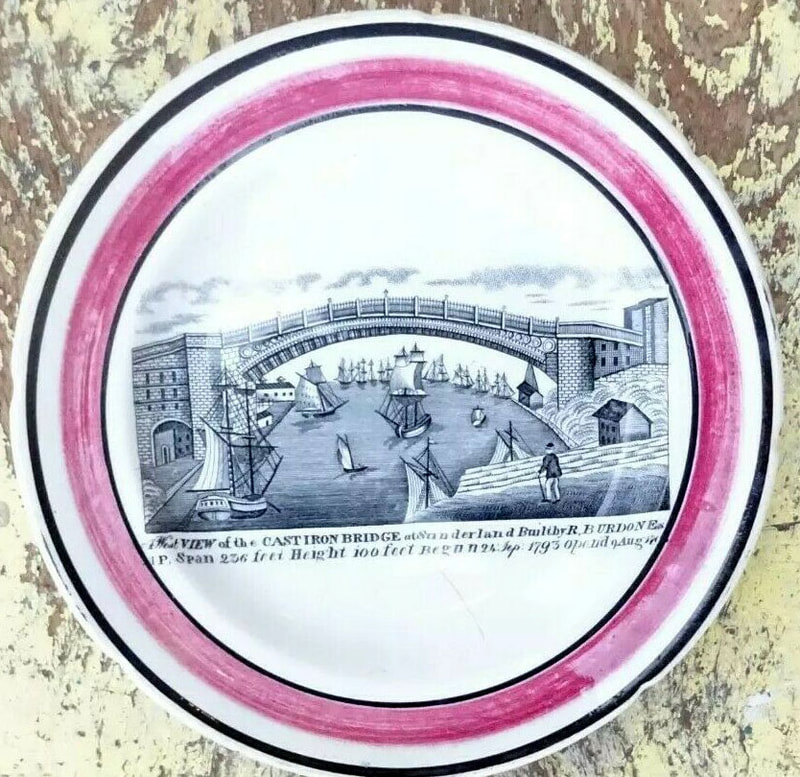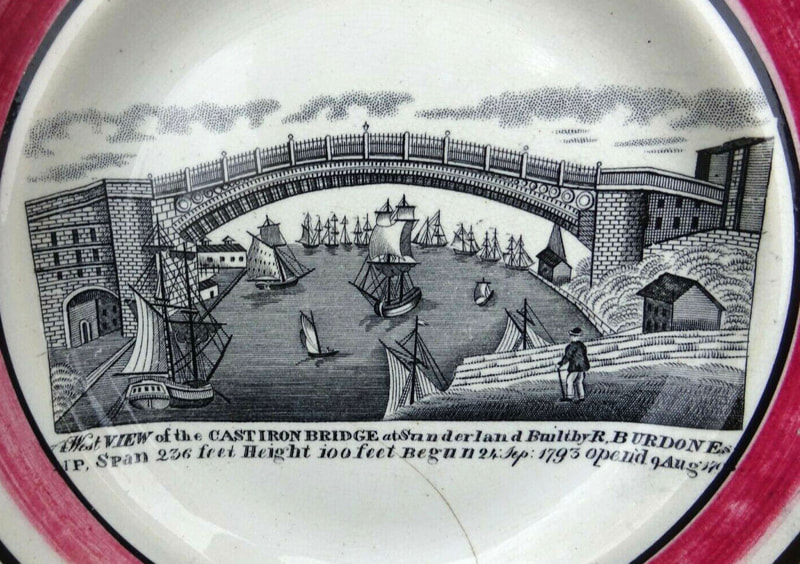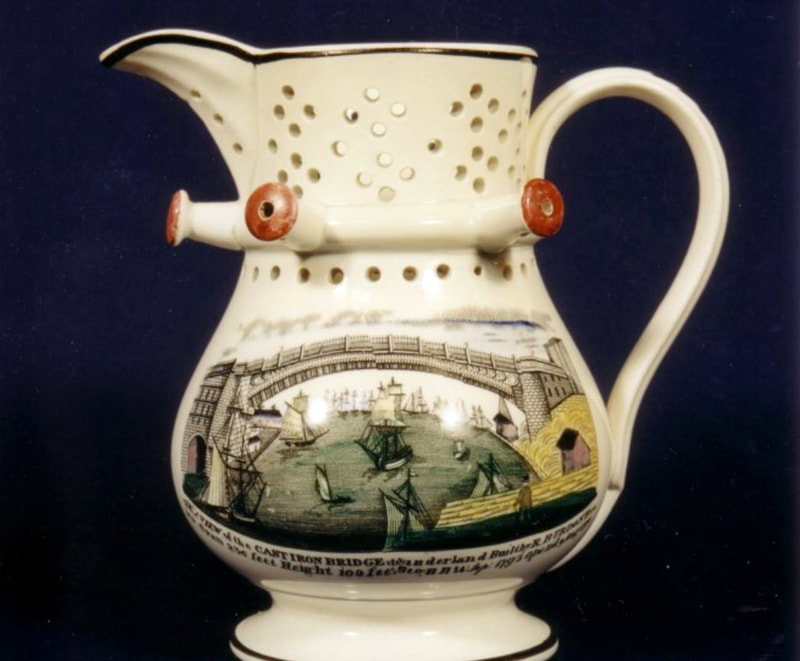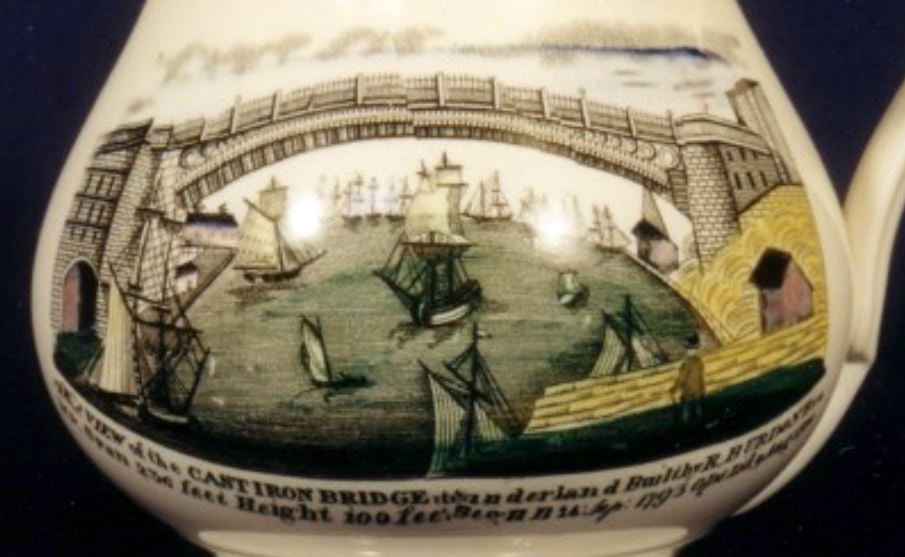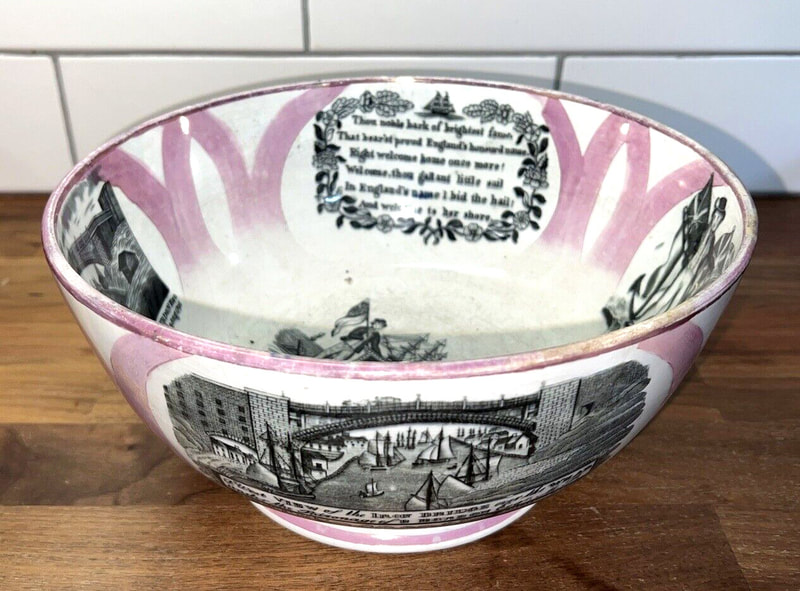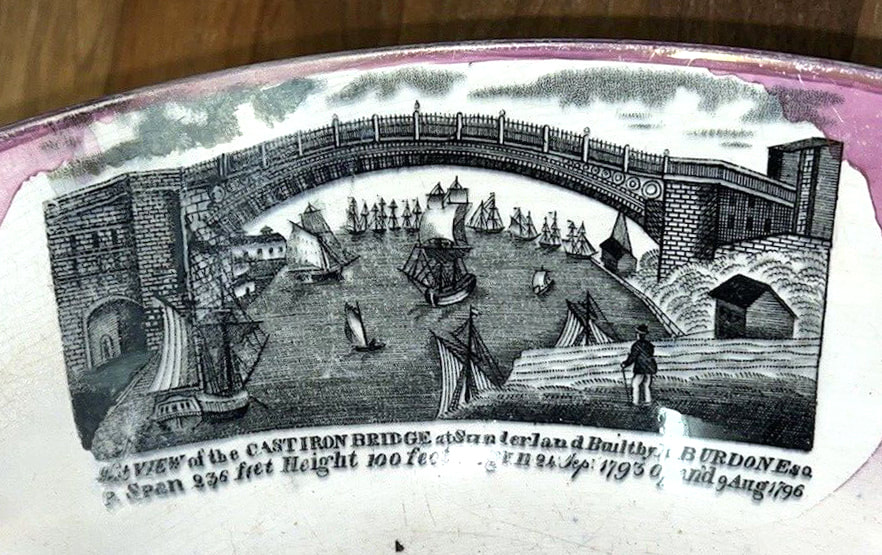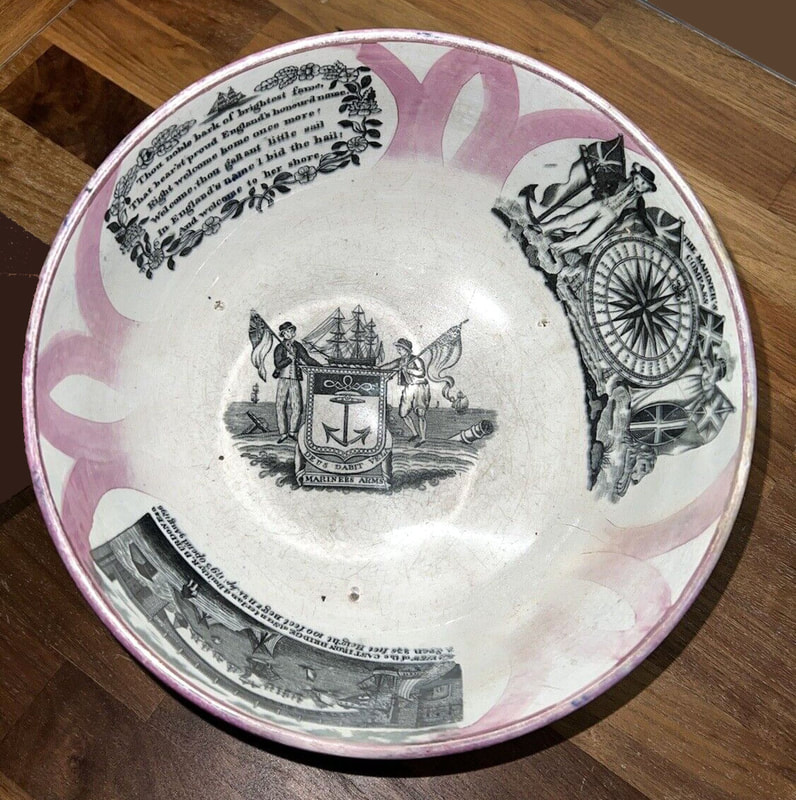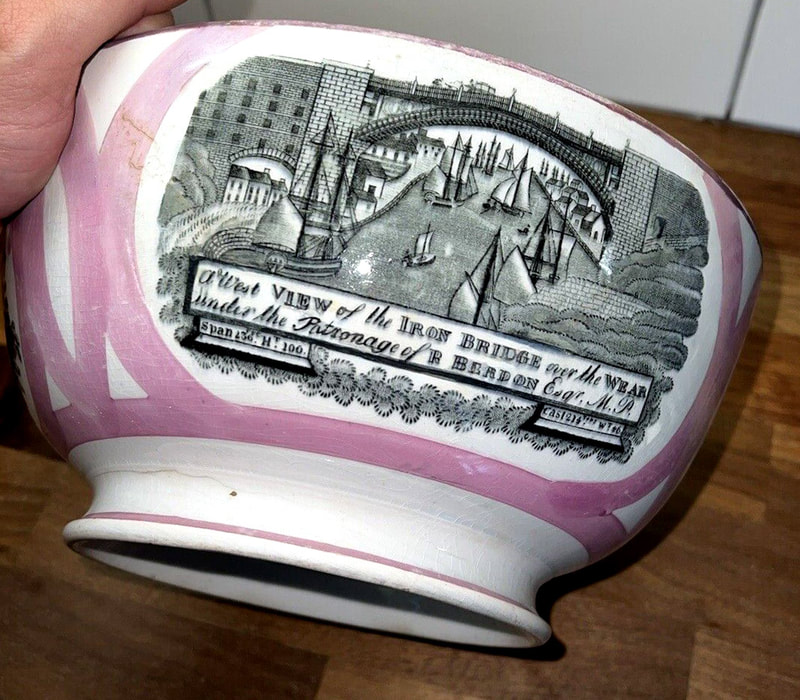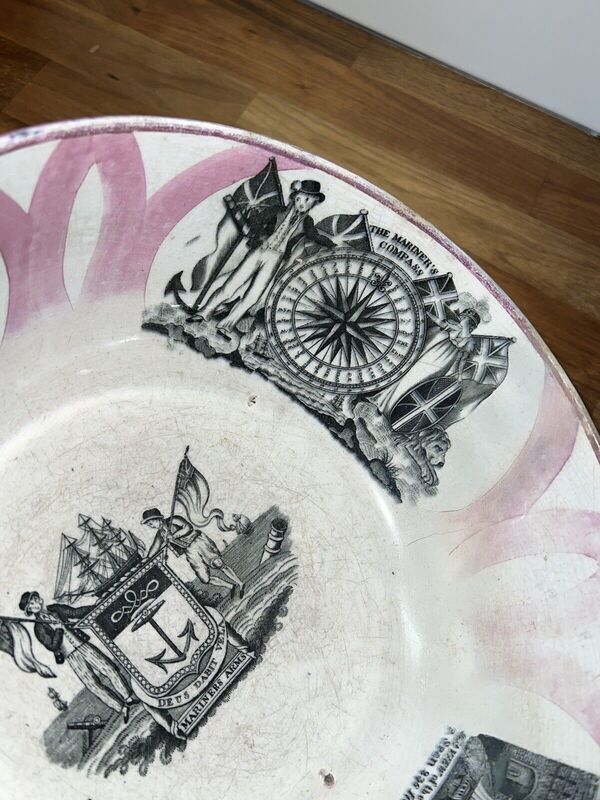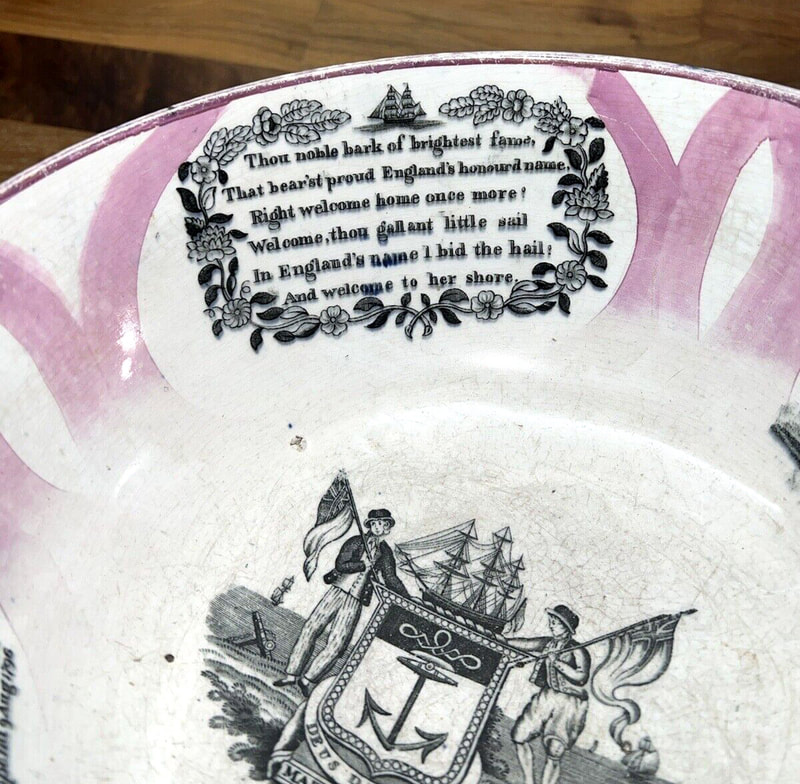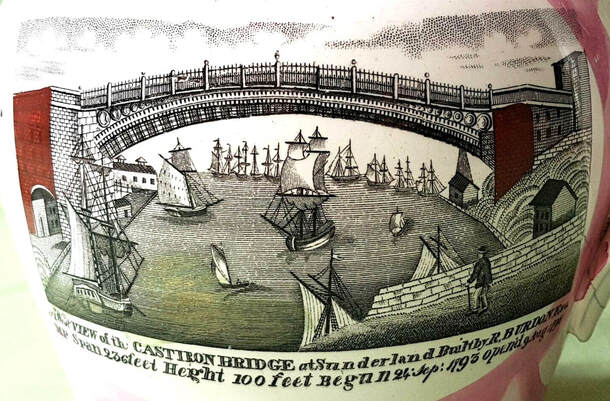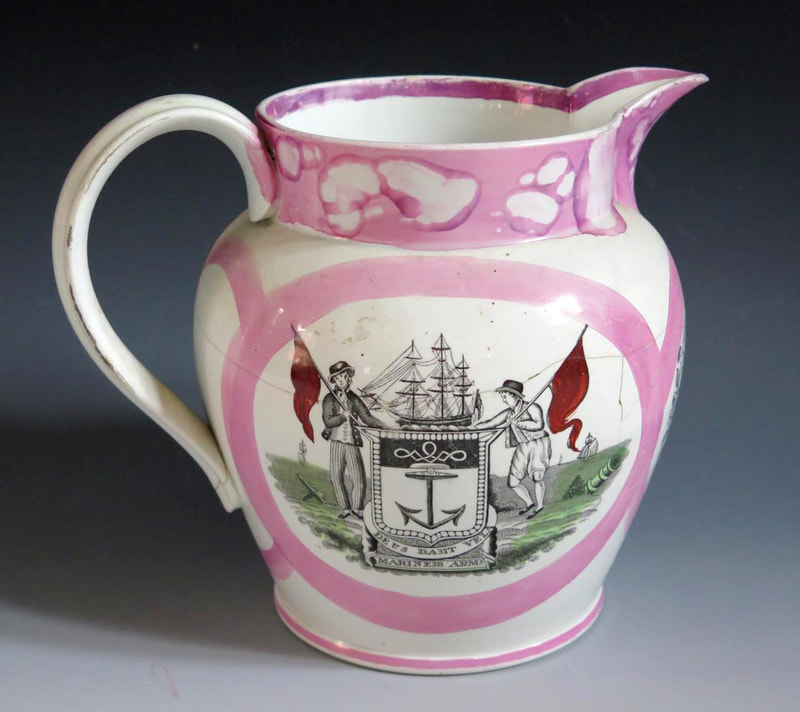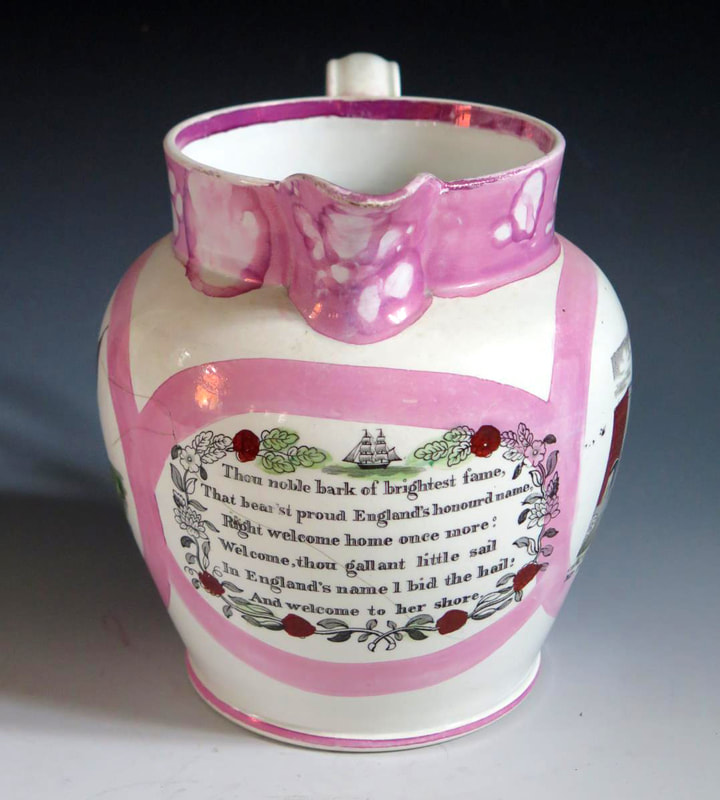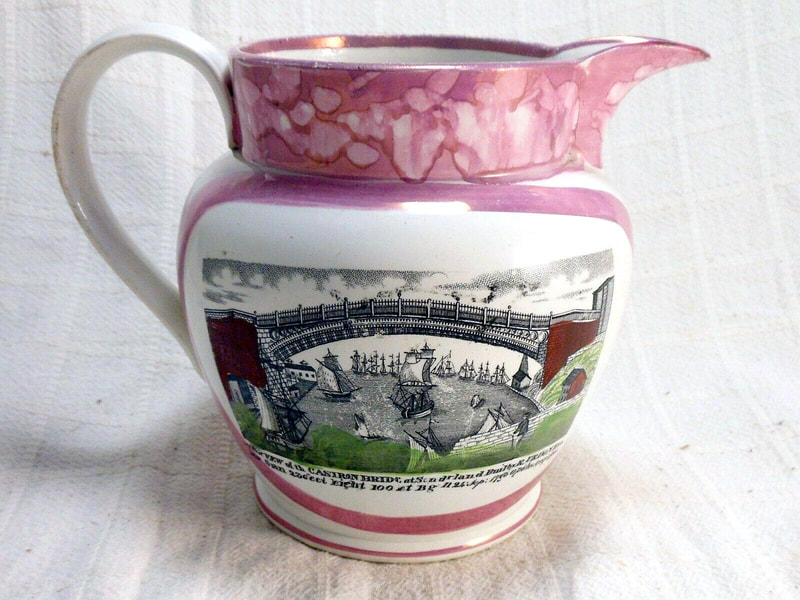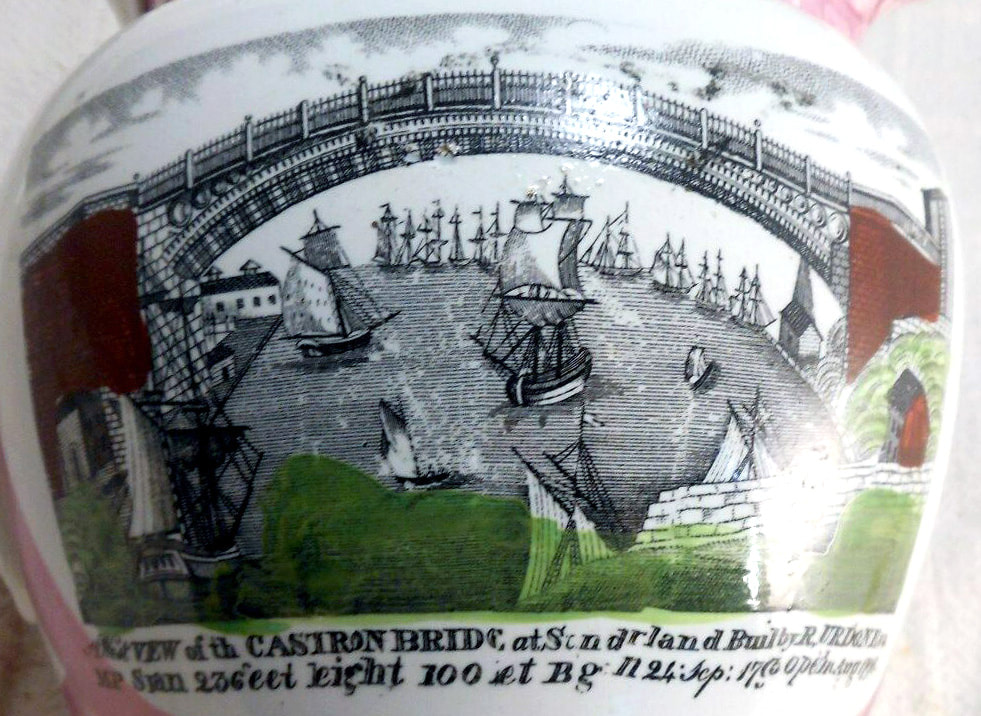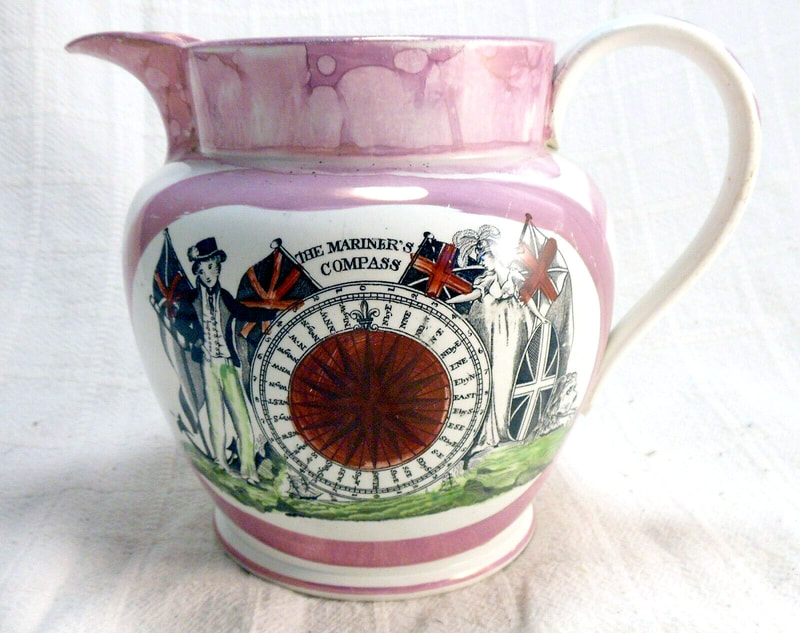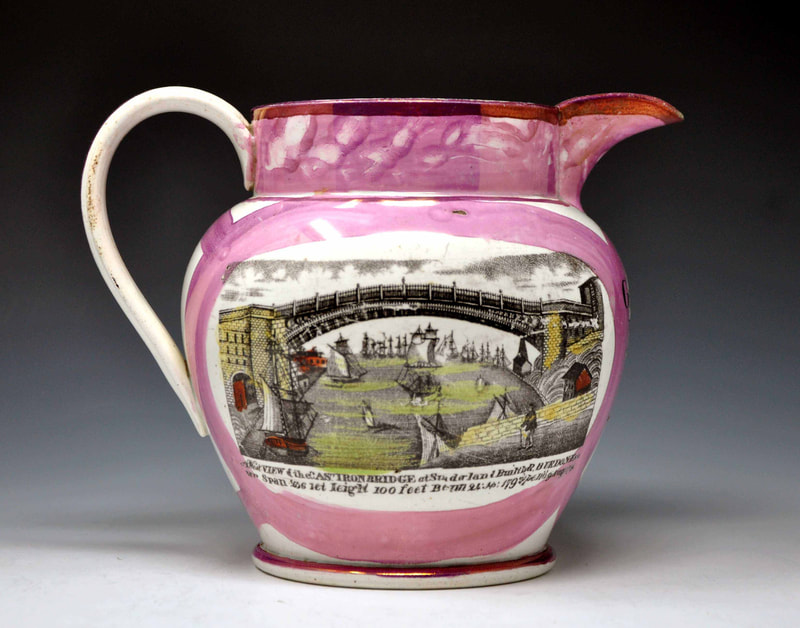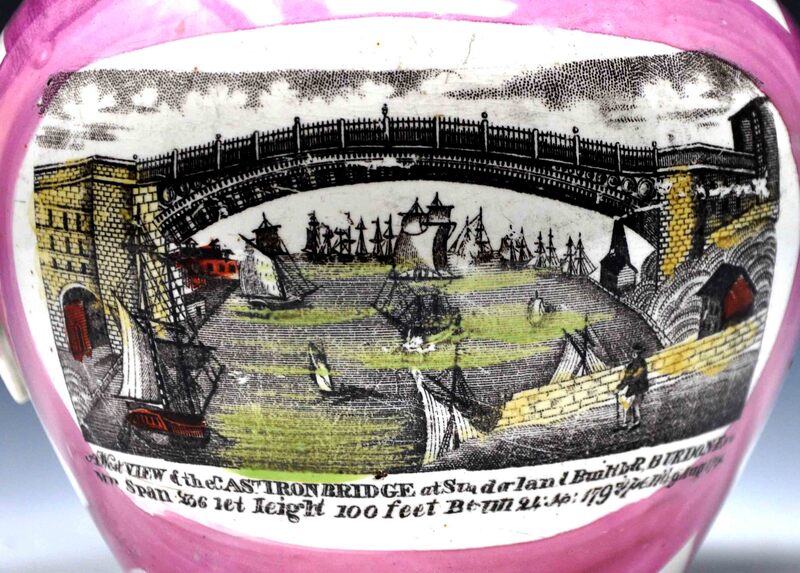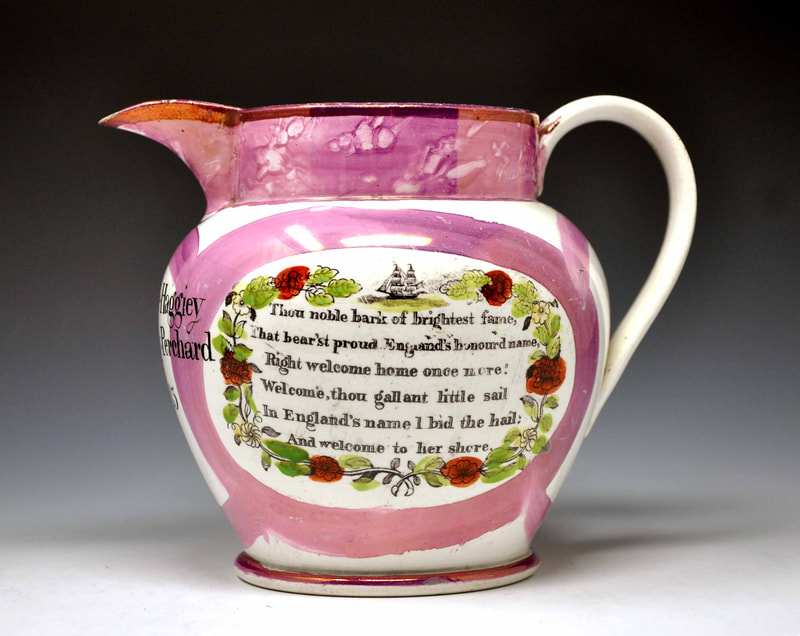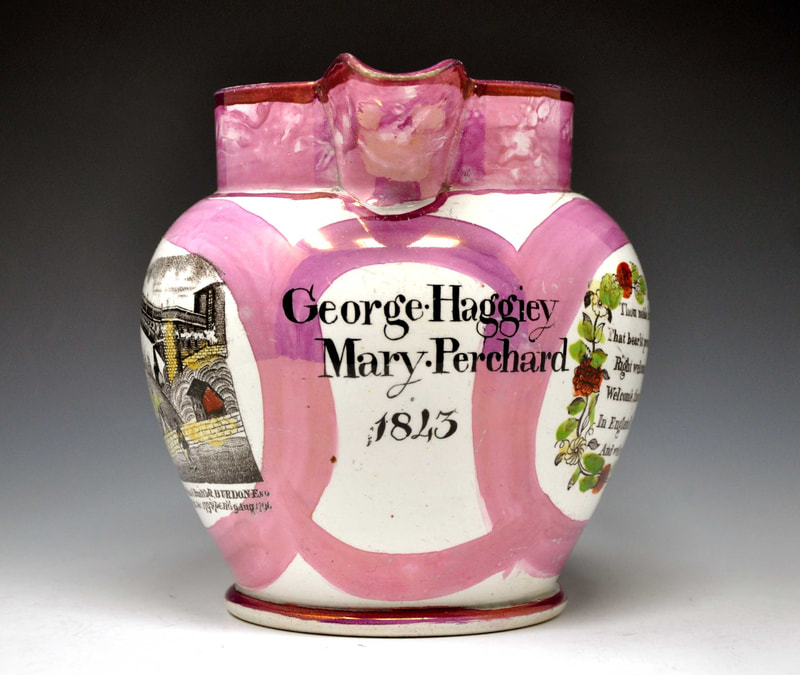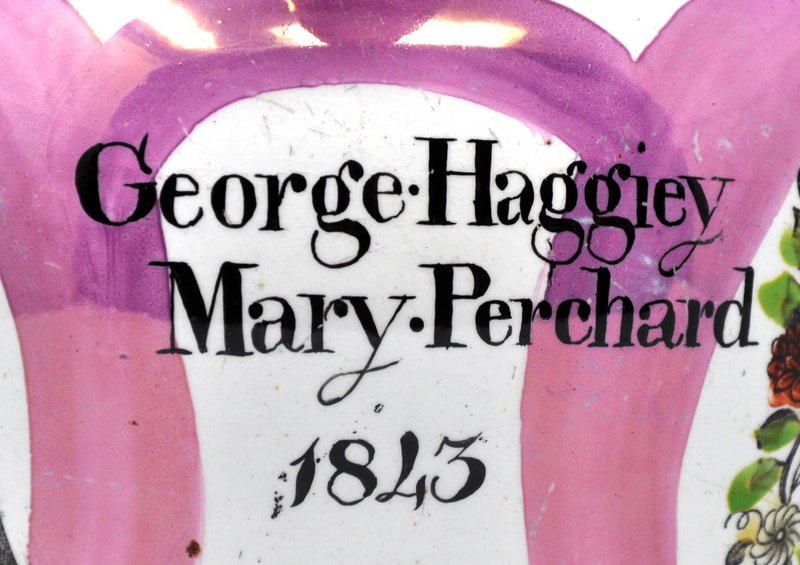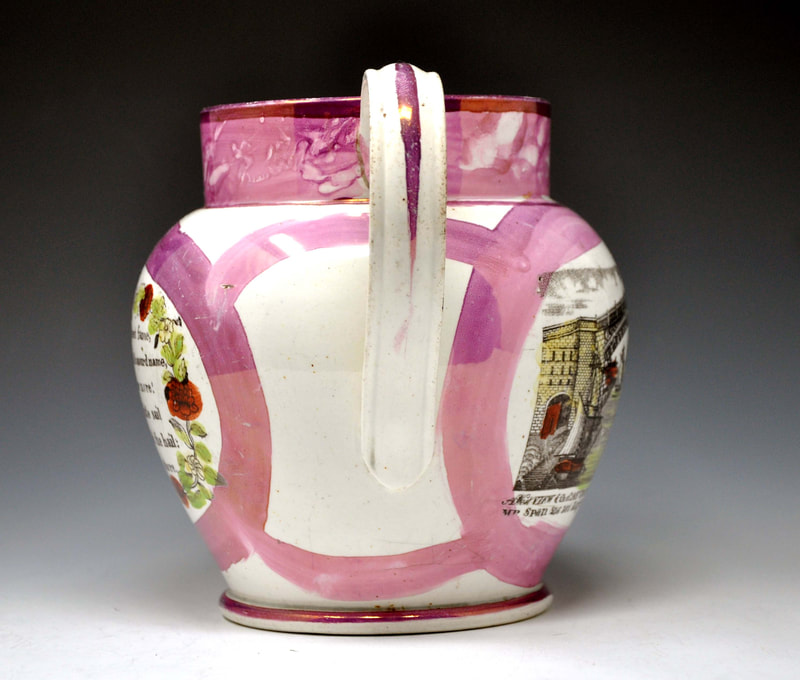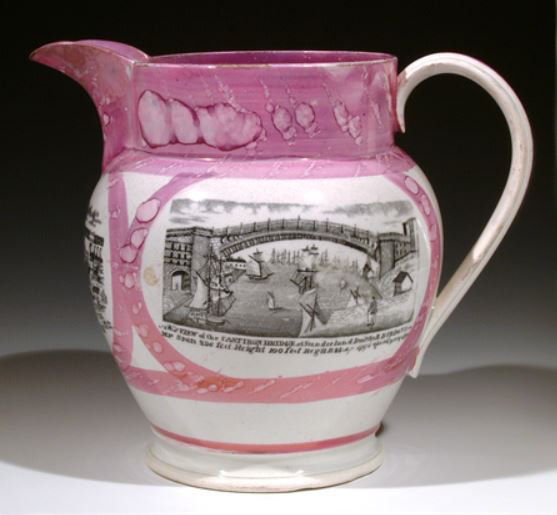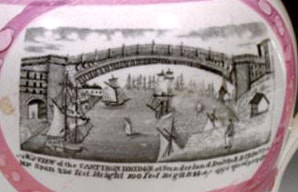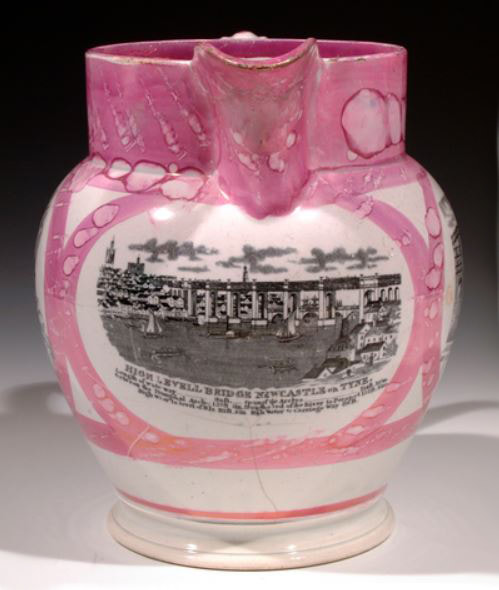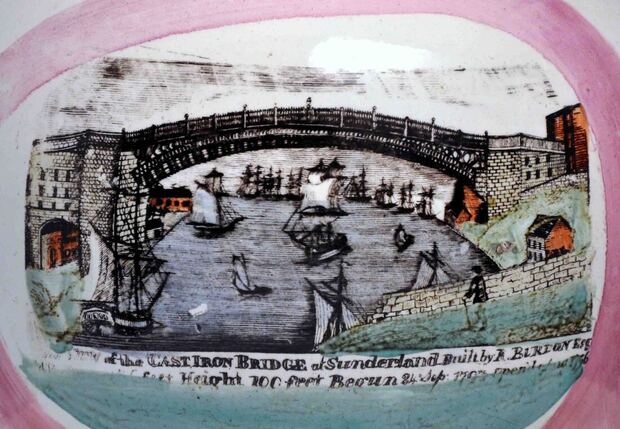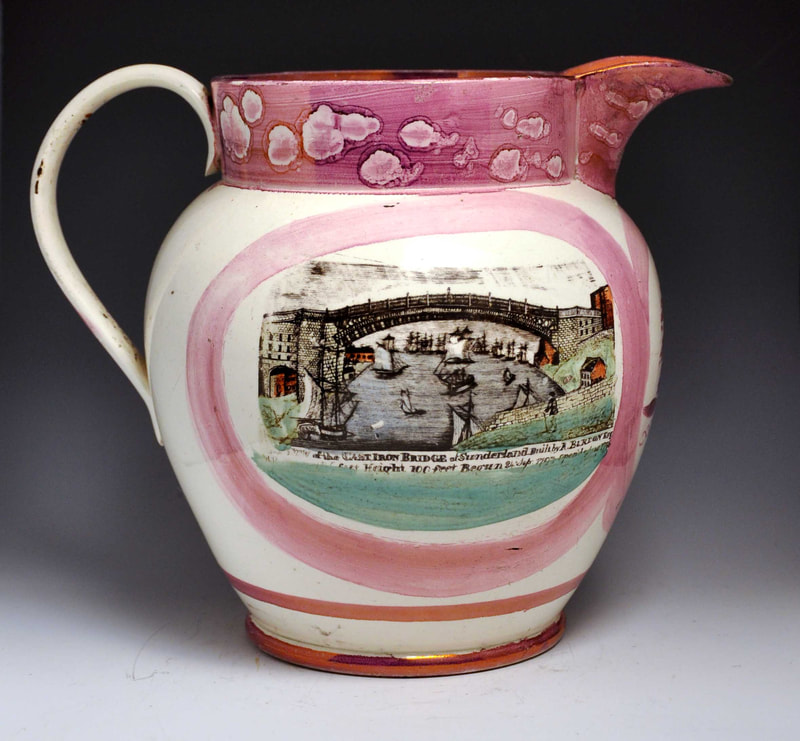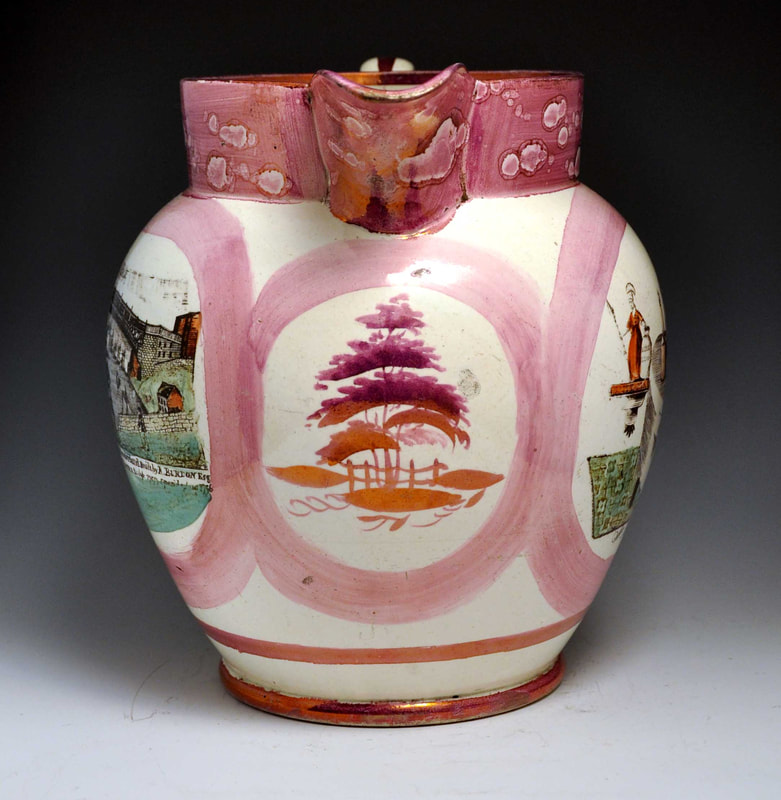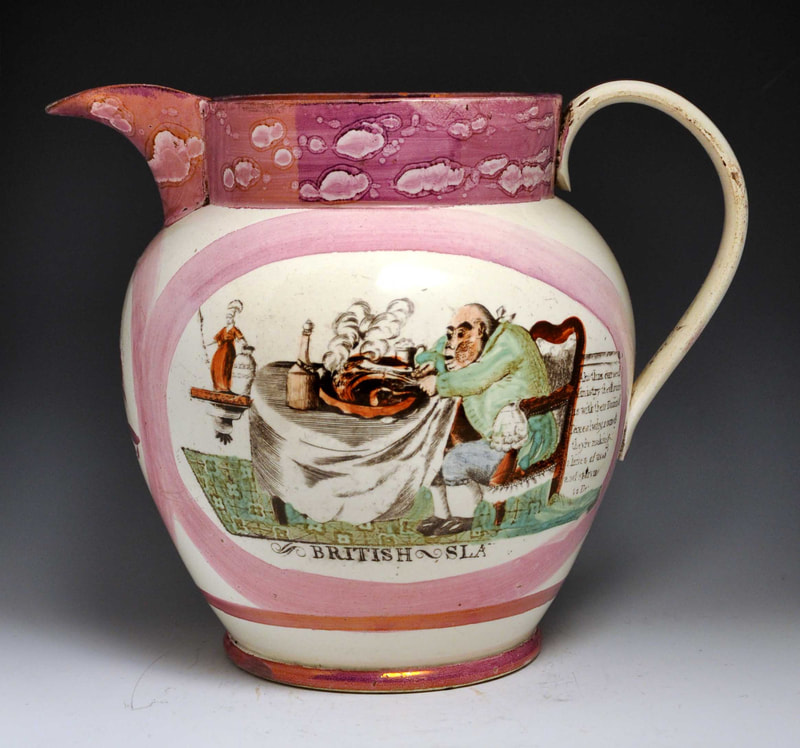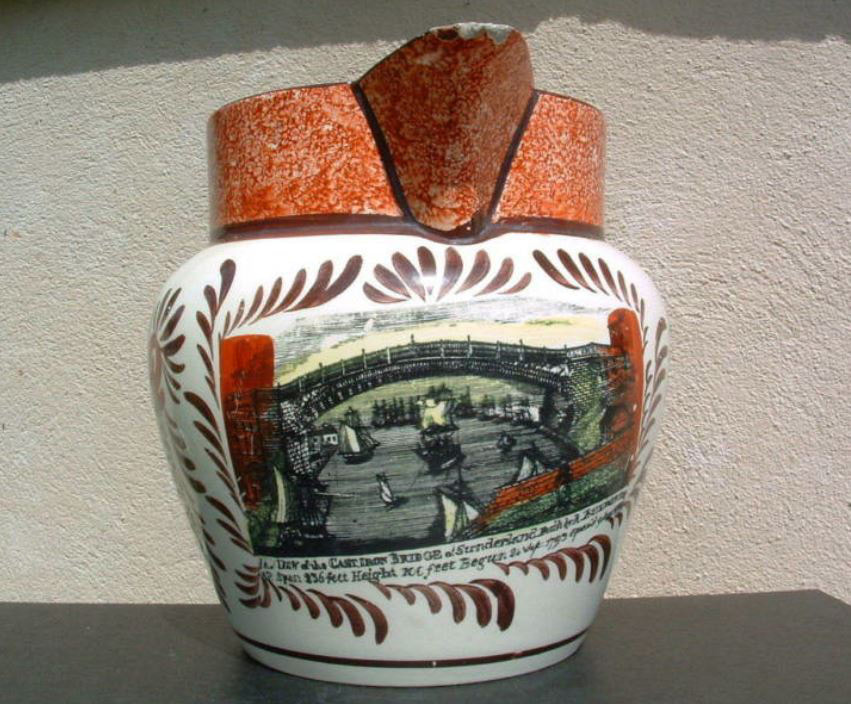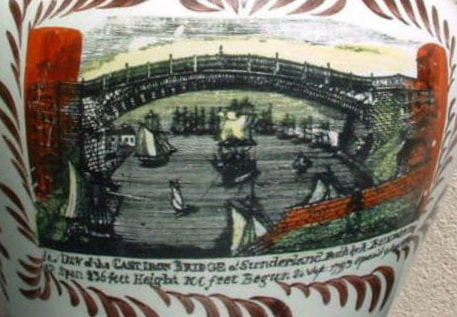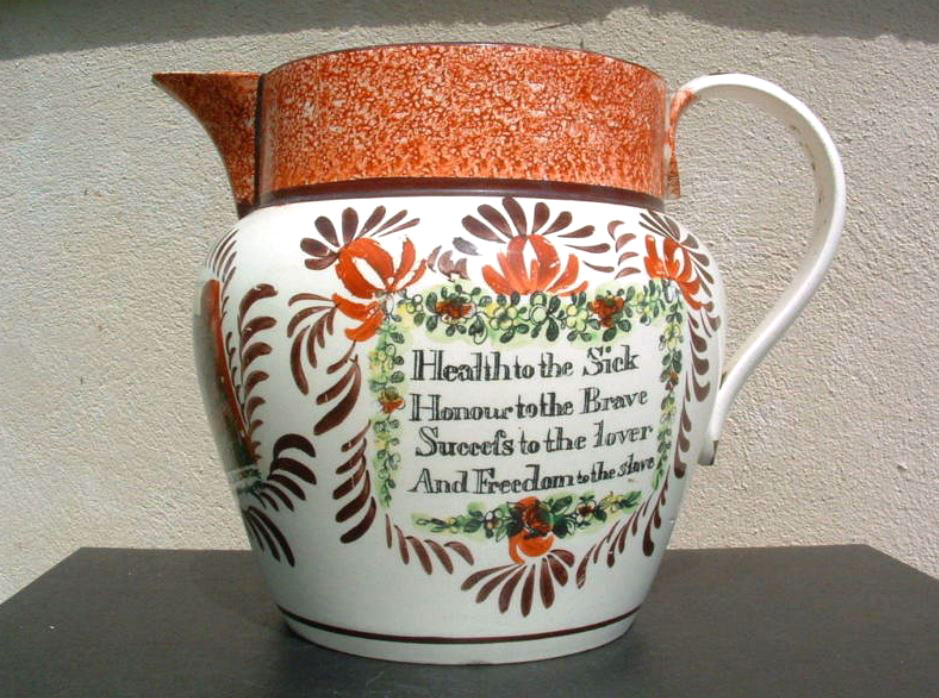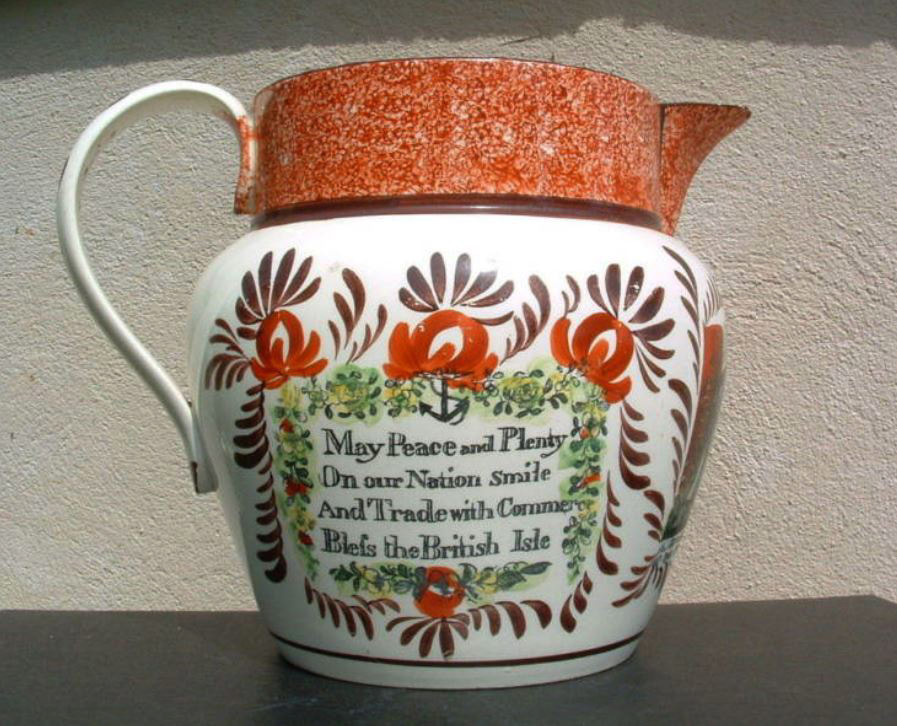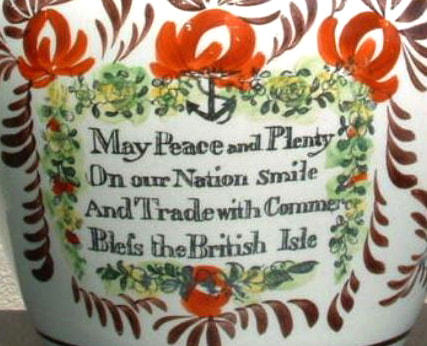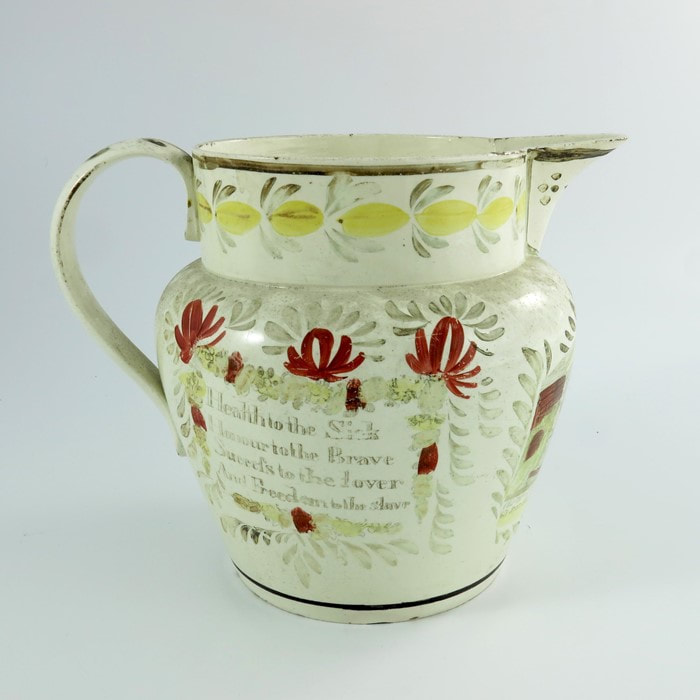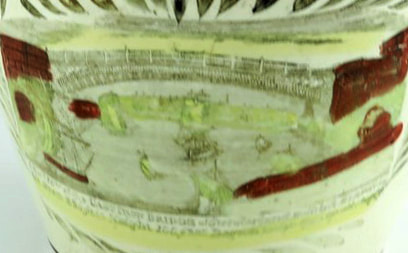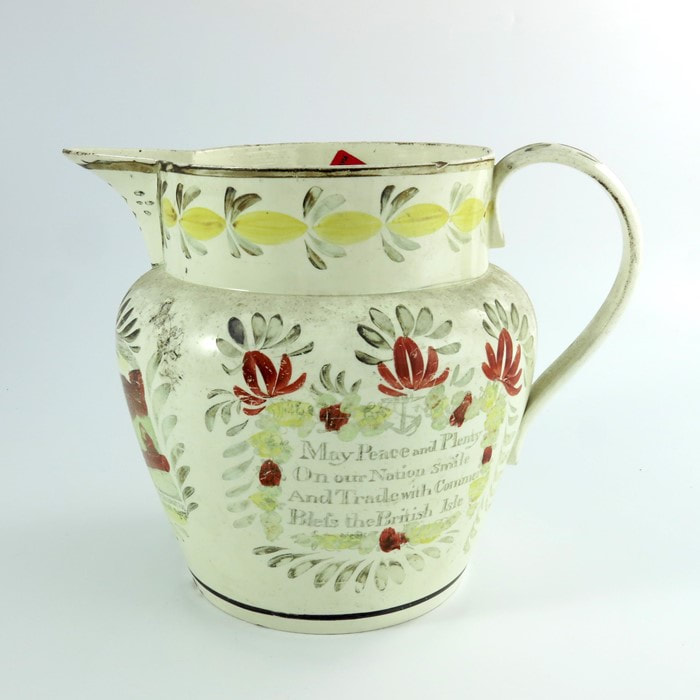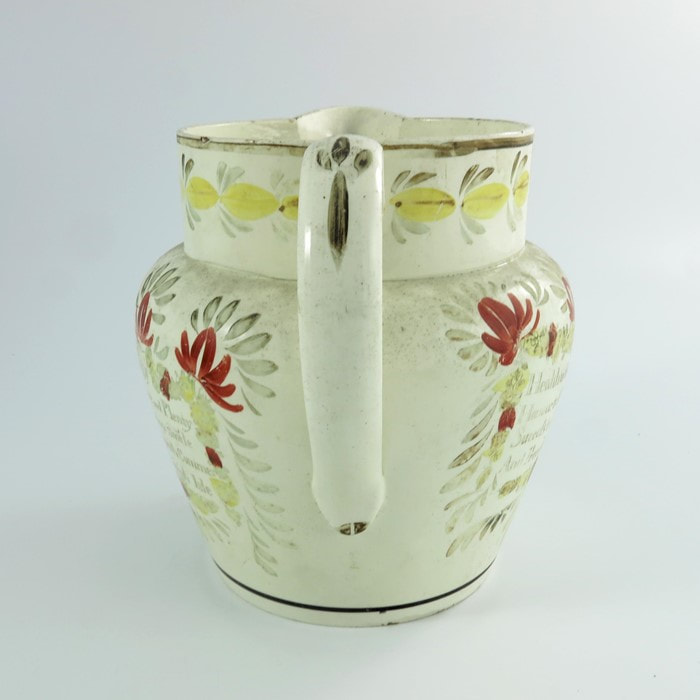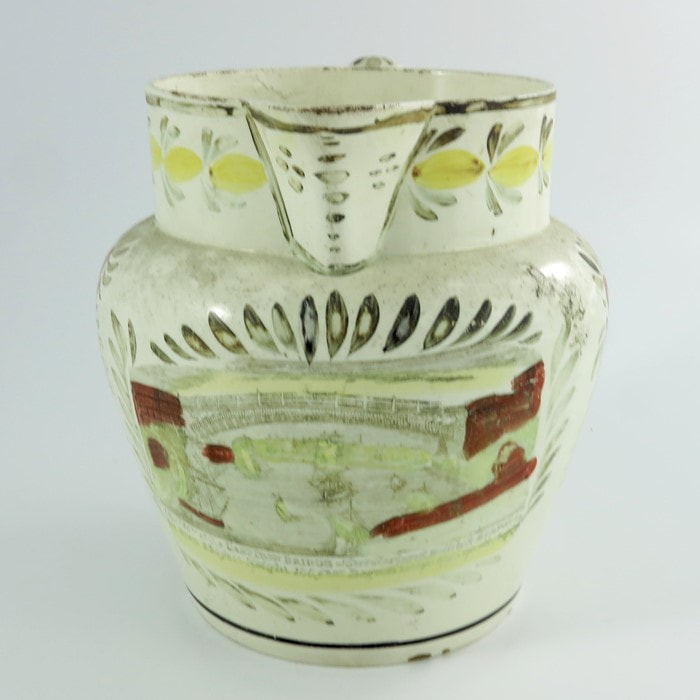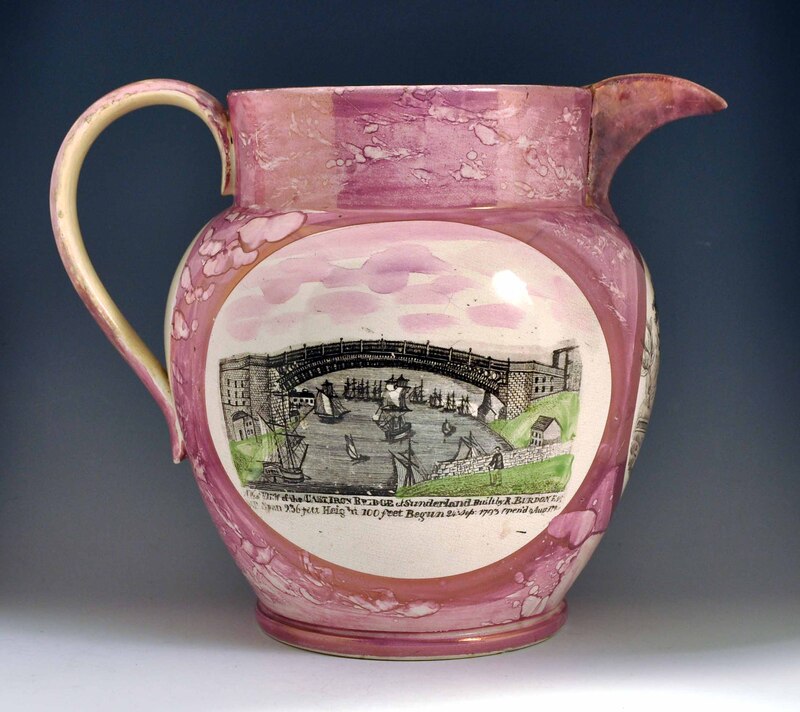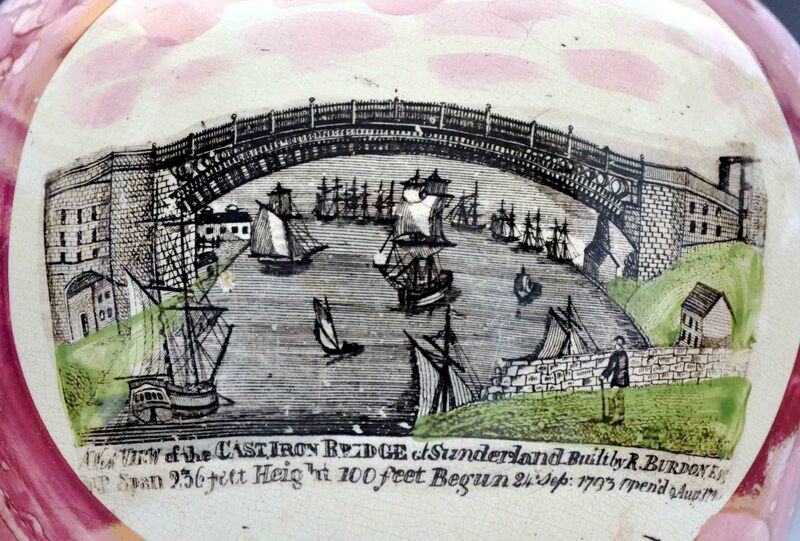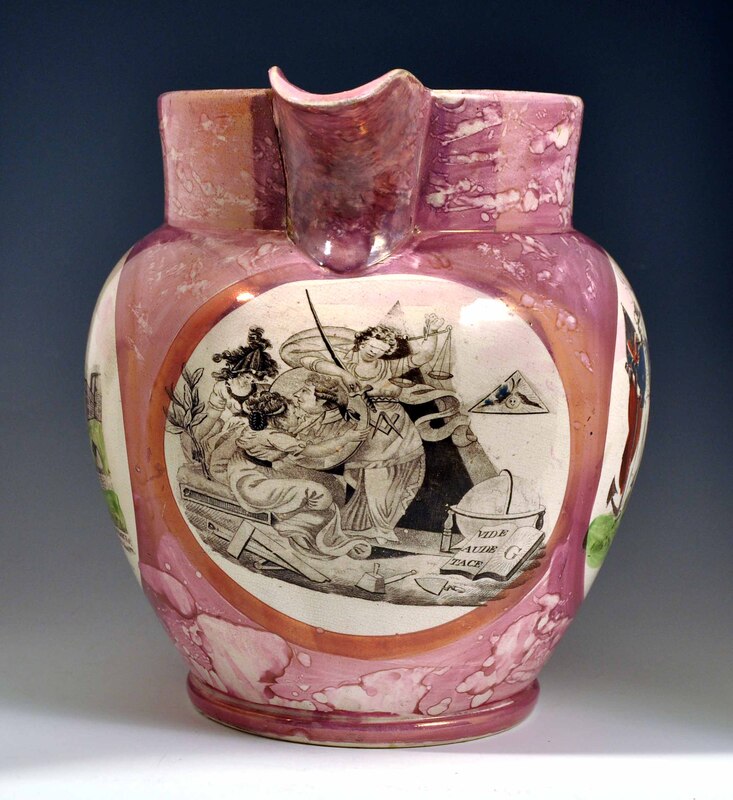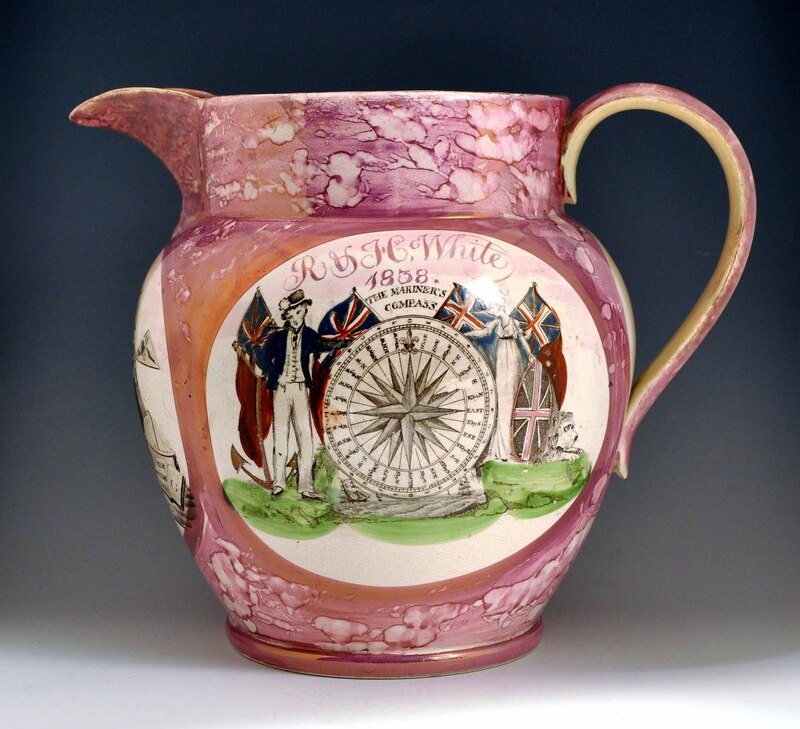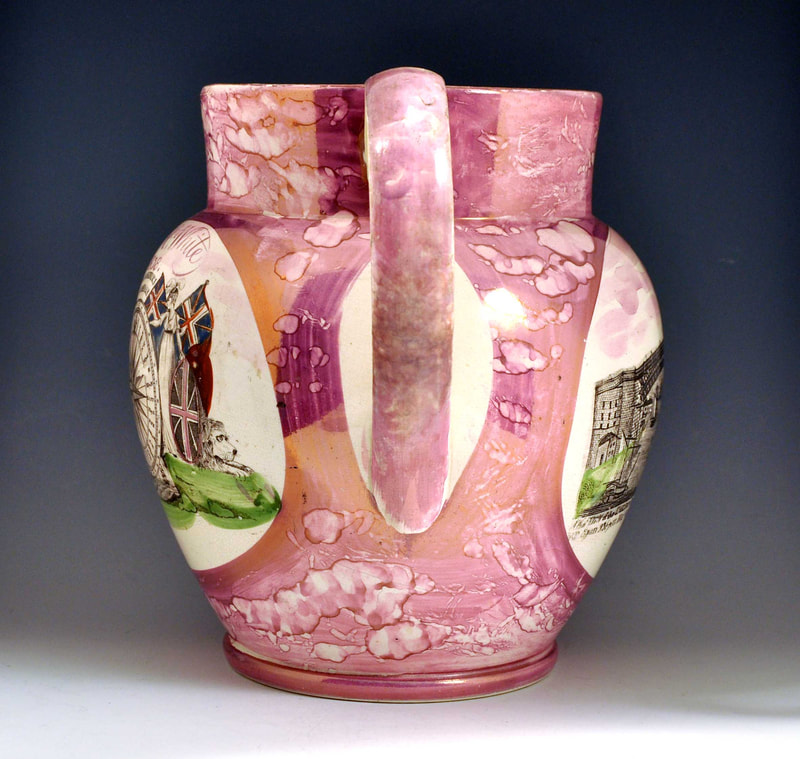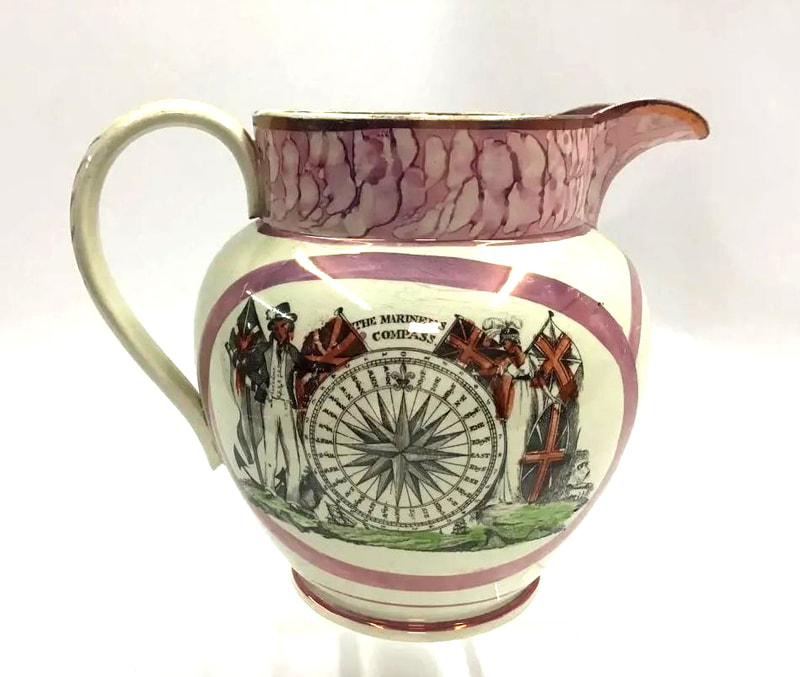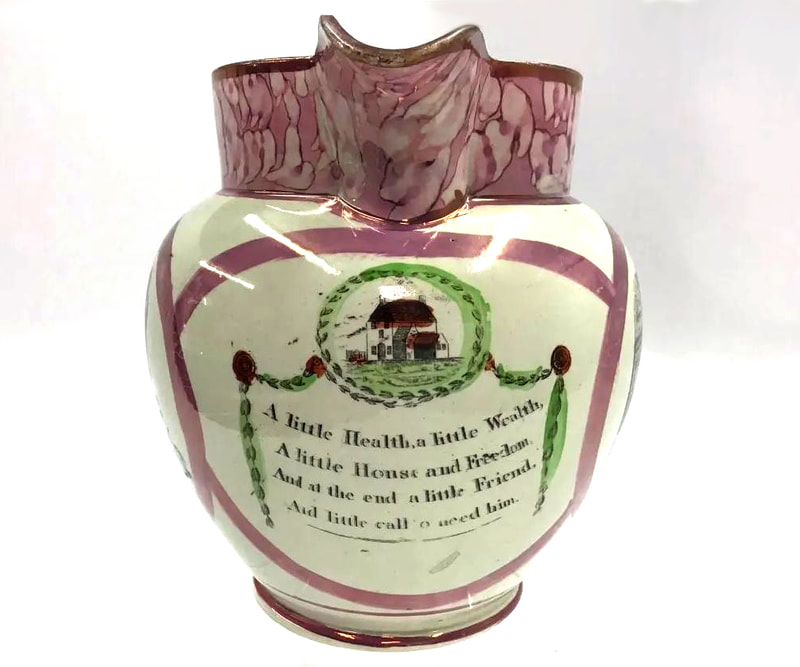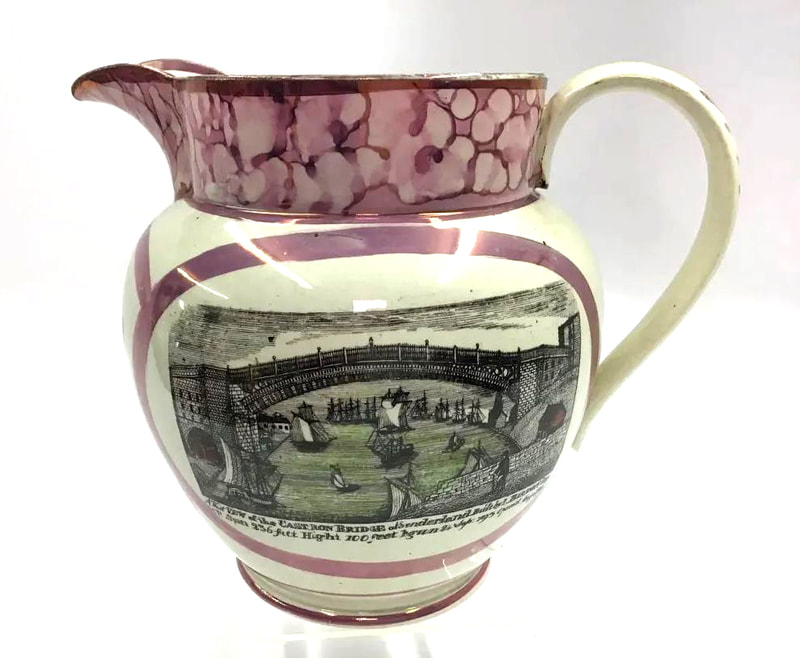West View of Cast Iron Bridge... (rectangular) – bridge 29
|
This is a similar view to bridge 12 (left detail) although in this version, there is another sail behind the wall, which echoes the one in the foreground (see right detail). Also, unlike bridge 12, the upper edge of the transfer is clearly delineated to form a rectangle. |
|
Attributed to Newbottle High Pottery
The Newbottle attribution for this transfer is convoluted, and relates to pottery items donated by descendants of the owners to the Victoria and Albert Museum. Read more here.
The defining feature is that the sky along the top edge of the transfer is squared off and clearly delineated within a dark border. N.B. the transfer on the plaques above has been trimmed slightly on the left edge to make it fit.
Below a jug and coffee pot (from the Sunderland Museum & Winter Gardens, Tyne & Wear Archives & Museums collection) with the same transfer.
A bowl with similar enamel decoration to the transfers as the jug above, and wavy lustre decoration.
Below a sparsely decorated frog mug with a 'Newbottle frog'.
The plaque below is a game changer in establishing the link between this bridge transfer and Newbottle. Unusually, it is signed, John Devine.
Norman Lowe has provided the following information. John Devine was christened on 3 August 1851 at St Michael’s church Houghton-le-Spring to parents John Devine and Elizabeth Graham Carr Devine. However, the birth was registered as John Richard Devine. In Andrew Fletcher’s booklet on the Newbottle potteries, John Devine is listed as a potter and Elizabeth Devine as a pottery labourer.
In the 1861 census John Davine (the spelling varies) was living at Pottery Yard Newbottle and is listed as a potter aged 10. Elizabeth, his mother, a was a potter labourer and was born 1823 Houghton-le-Spring. Her two daughters Ann Carr and Mary Davine were both born in Houghton and were potters. Two younger brothers and a granddaughter were there, Richard born 1857 and John and Elizabeth born 1860. In 1871 the family was still at Pottery Yard but John aged 20 was a coal miner and Elizabeth and Ann were unemployed.
To sum up, the family moved from Houghton-le-Spring to Newbottle between 1851 and 1857 and worked at the pottery, finishing by 1871.
Norman Lowe has provided the following information. John Devine was christened on 3 August 1851 at St Michael’s church Houghton-le-Spring to parents John Devine and Elizabeth Graham Carr Devine. However, the birth was registered as John Richard Devine. In Andrew Fletcher’s booklet on the Newbottle potteries, John Devine is listed as a potter and Elizabeth Devine as a pottery labourer.
In the 1861 census John Davine (the spelling varies) was living at Pottery Yard Newbottle and is listed as a potter aged 10. Elizabeth, his mother, a was a potter labourer and was born 1823 Houghton-le-Spring. Her two daughters Ann Carr and Mary Davine were both born in Houghton and were potters. Two younger brothers and a granddaughter were there, Richard born 1857 and John and Elizabeth born 1860. In 1871 the family was still at Pottery Yard but John aged 20 was a coal miner and Elizabeth and Ann were unemployed.
To sum up, the family moved from Houghton-le-Spring to Newbottle between 1851 and 1857 and worked at the pottery, finishing by 1871.
For many years I thought that Moore's Wear Pottery must have acquired the Newbottle-attributed transfer plate in the mid 1850s, when the Brodrick and Beckwith partnership dissolved. As the plaques below with dark brown borders are very similar to those produced by Moore's. However, the inscription on the plaque above, of similar form, suggests that they were made at Newbottle in the 1860s.
Attributed to Seaham Pottery
The attribution of this transfer is based on the Seaham jug in the Sunderland Museum, which has a painted factory mark 'Walker & Co, Seaham Pottery 1847'. The earlier jug below has a Mariner's Compass transfer, that also appears on the museum jug.
The defining feature of this transfer is that, although rectangular, the top edge is loosely delineated by broken clouds.
A smaller jug with a strap handle.
The transfer is easier to see on this plate. Unlike the Newbottle attributed version above, the house in the foreground has 6 windows (3 up, 3 down).
Finally, what appears to be the Seaham version of the transfer on a puzzle jug. However, note that there are only two windows on the front of the house on the right. It is possible that more were added during a later round of re-engraving. These are the only images I have, and I don't have a record of their source. If you own a similar puzzle jug, I would love to hear from you via the link at the foot of the page.
West View of Cast Iron Bridge... (rectangular) – Tyneside
Attributed to John Carr and Sons, North Shields
We know that transfer plates used at Seaham Pottery turn up at North Shields, c1850. John Hedley Walker, the owner of the Seaham Pottery, moved his operations to Carr's Hill Pottery near Gateshead in 1849. 'Carr's Hill' refers to a village, and not to the North Shields potter. However, this does provide a plausible explanation for why the copper plates might have migrated northwards to Tyneside.
Unusually, the Seaham transfers are here combined with the Carr version of bridge 14, more usually associated with Dixon.
Unusually, the Seaham transfers are here combined with the Carr version of bridge 14, more usually associated with Dixon.
Unidentified pottery
This version is similar to the Newbottle one in that the transfer is squared off and clearly delineated within a dark border.
This jug with the transfer has an inscription in a hand I haven't seen before.
This jug, in the Sunderland Museum & Winter Gardens, Tyne & Wear Archives & Museums collection is, in their catalogue, tentatively attributed to Maling. However, the Newcastle High Level Bridge transfer is one I have attributed to Thomas Fell. I don't have a good enough image to be sure it is from the same copper plate as the jugs above.
Unidentified Tyneside pottery
In this version the sky is shaded with horizontally ruled lines above and below the bridge.
A very finely potted jug from about 1830. The British Slavery transfer, based on a print by James Gillray, is a variation of a transfer used by the Newcastle Pottery.
What appears to be the same transfer on two jugs from the 1820s. Their enamel decoration is very similar to that found on items by Robert Maling. It looks as if something went wrong in the firing process of the jug below.
A rare masonic jug from the same, as-yet to be identified, pottery. The inscription is dated 1838, so it is likely later than the jug above, but comes from the same transfer plate. The sky above the bridge has been trimmed off.
